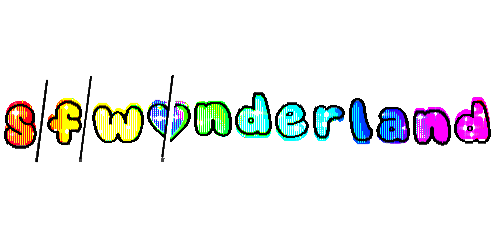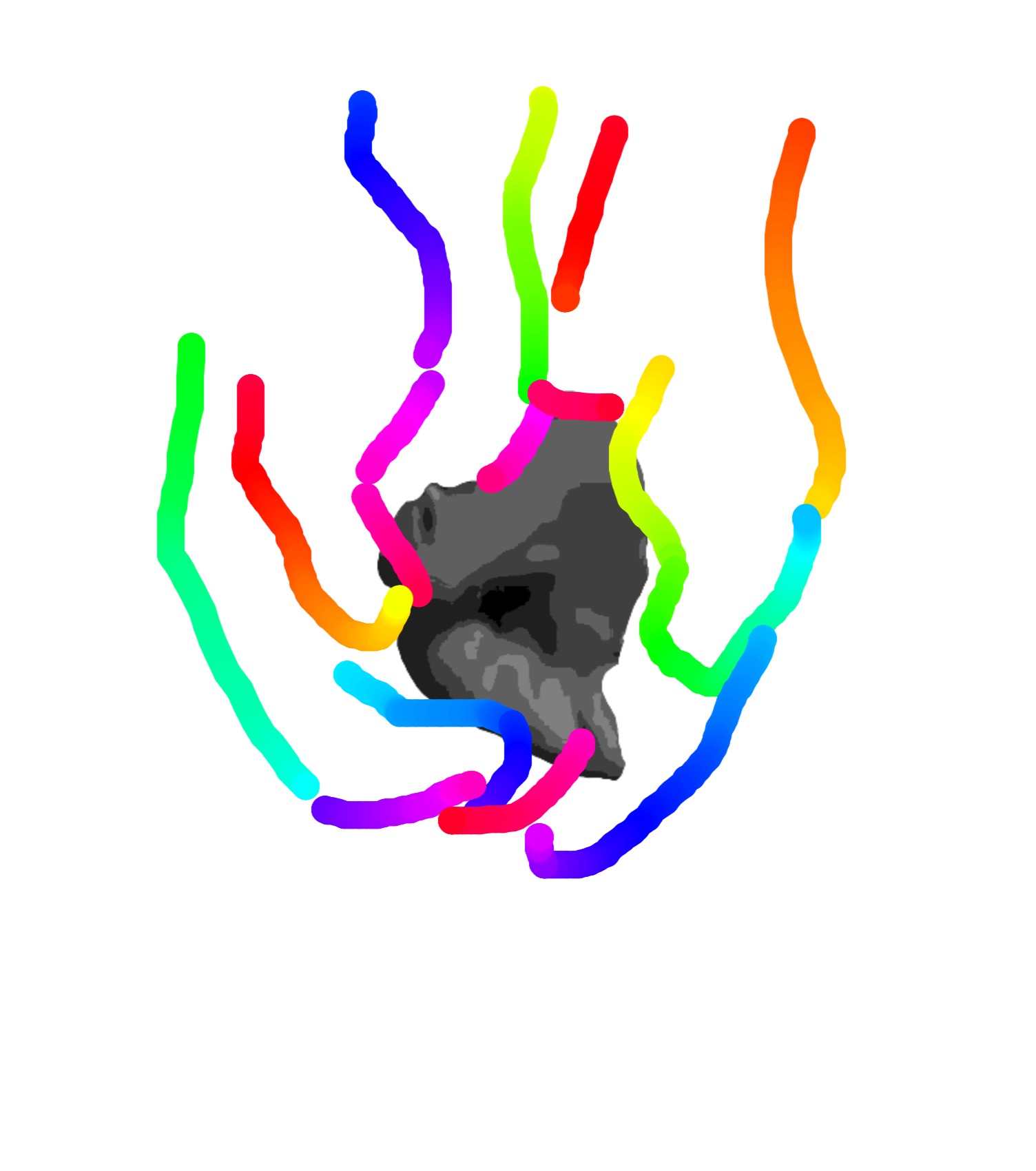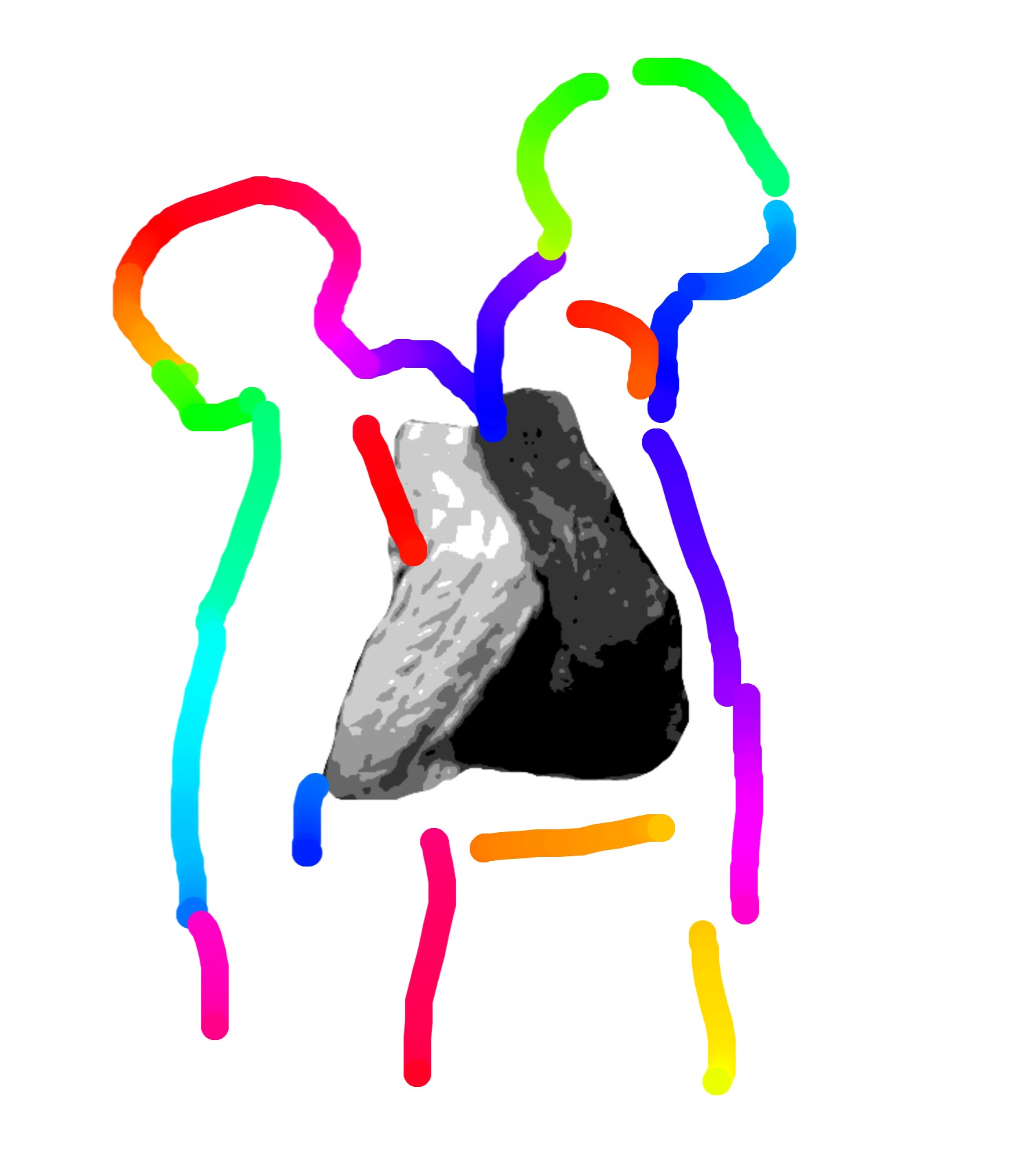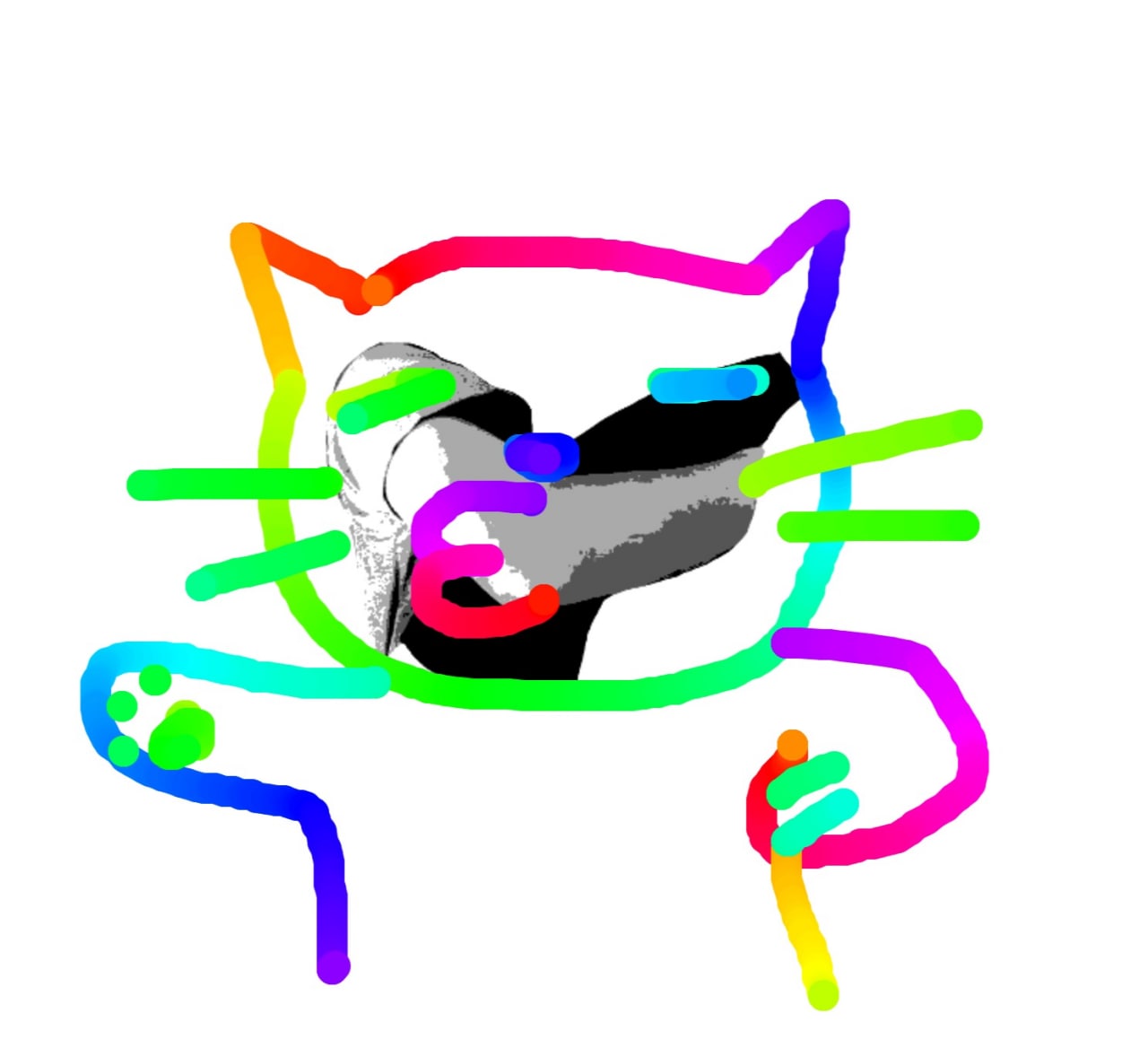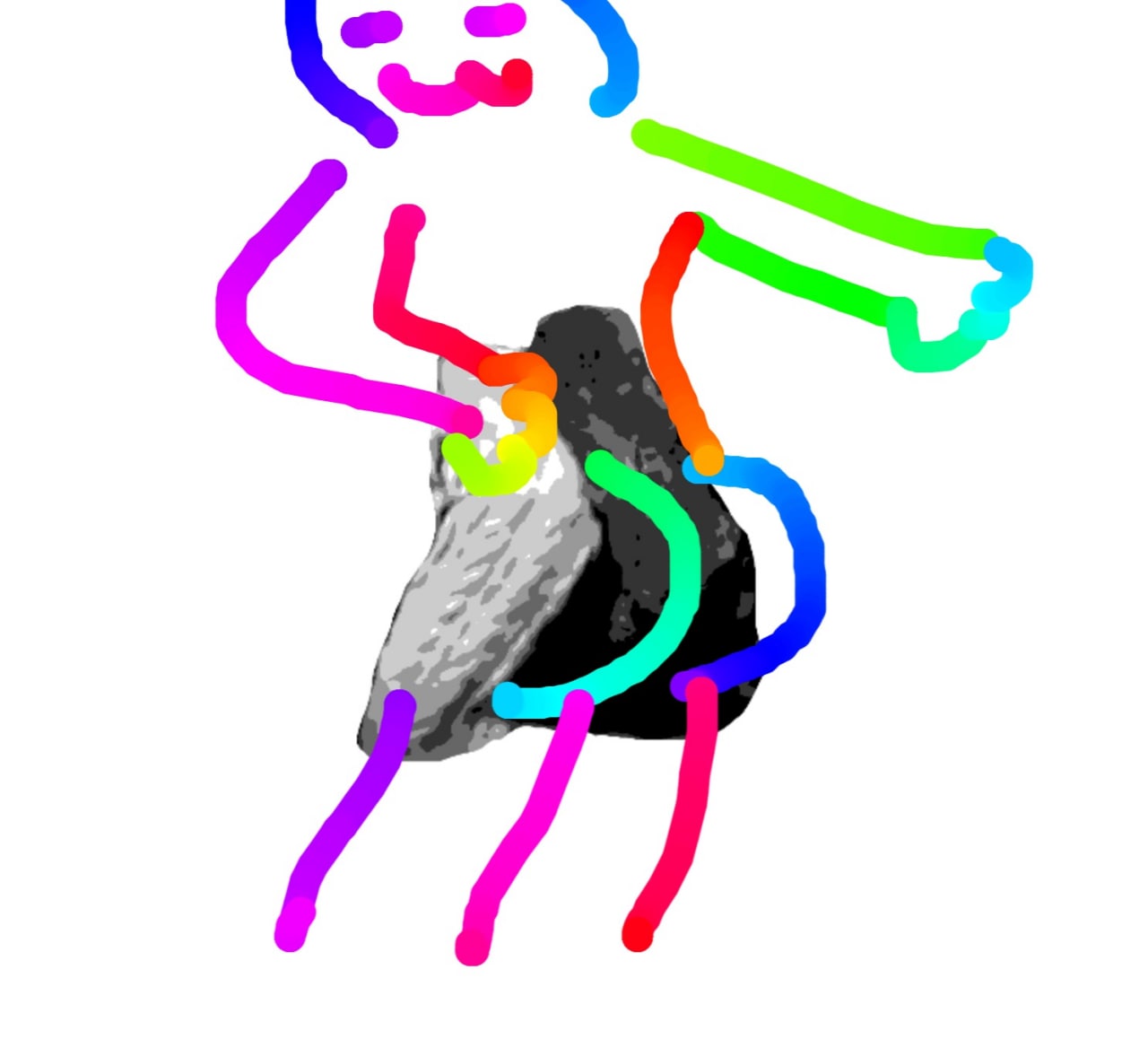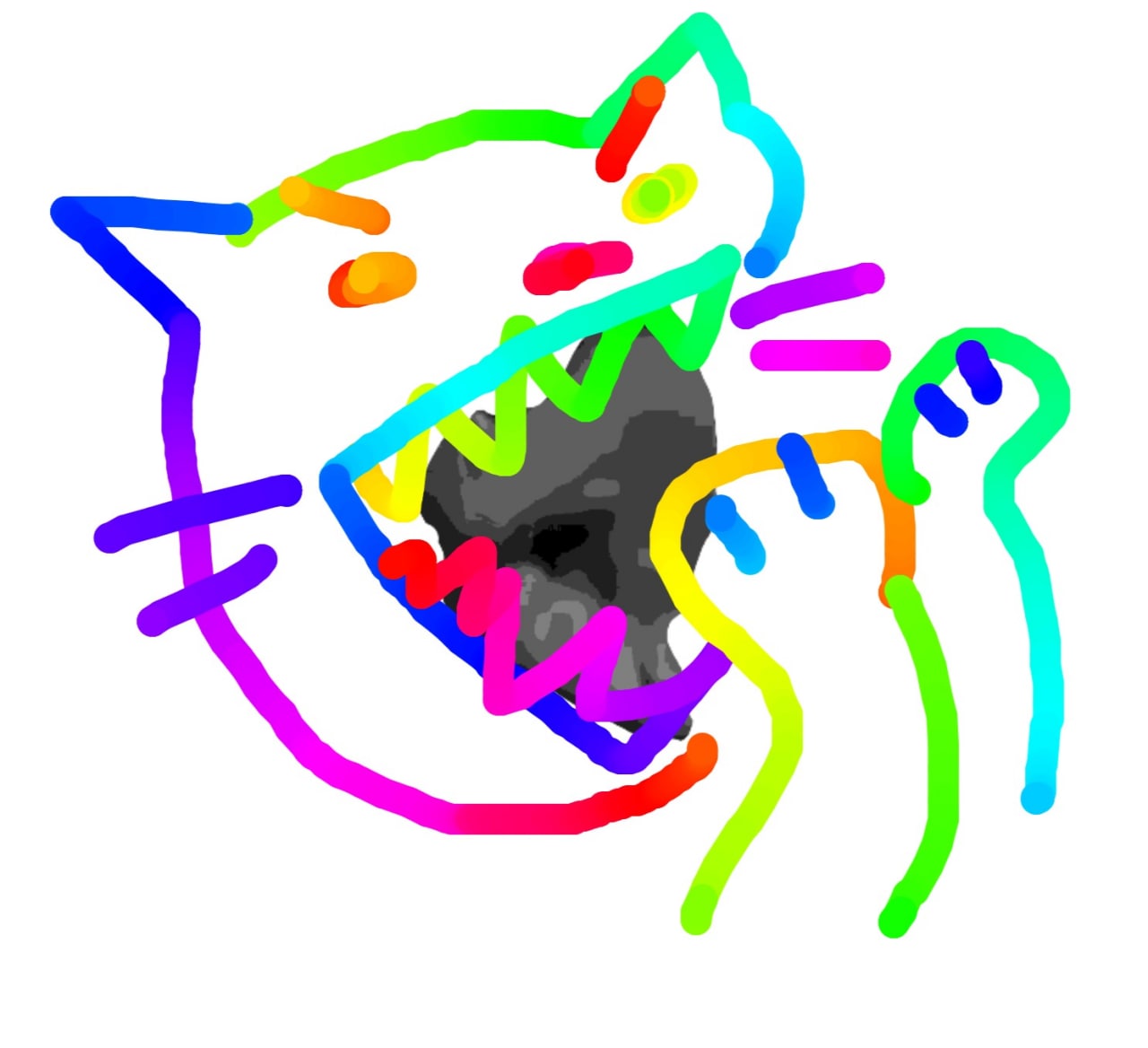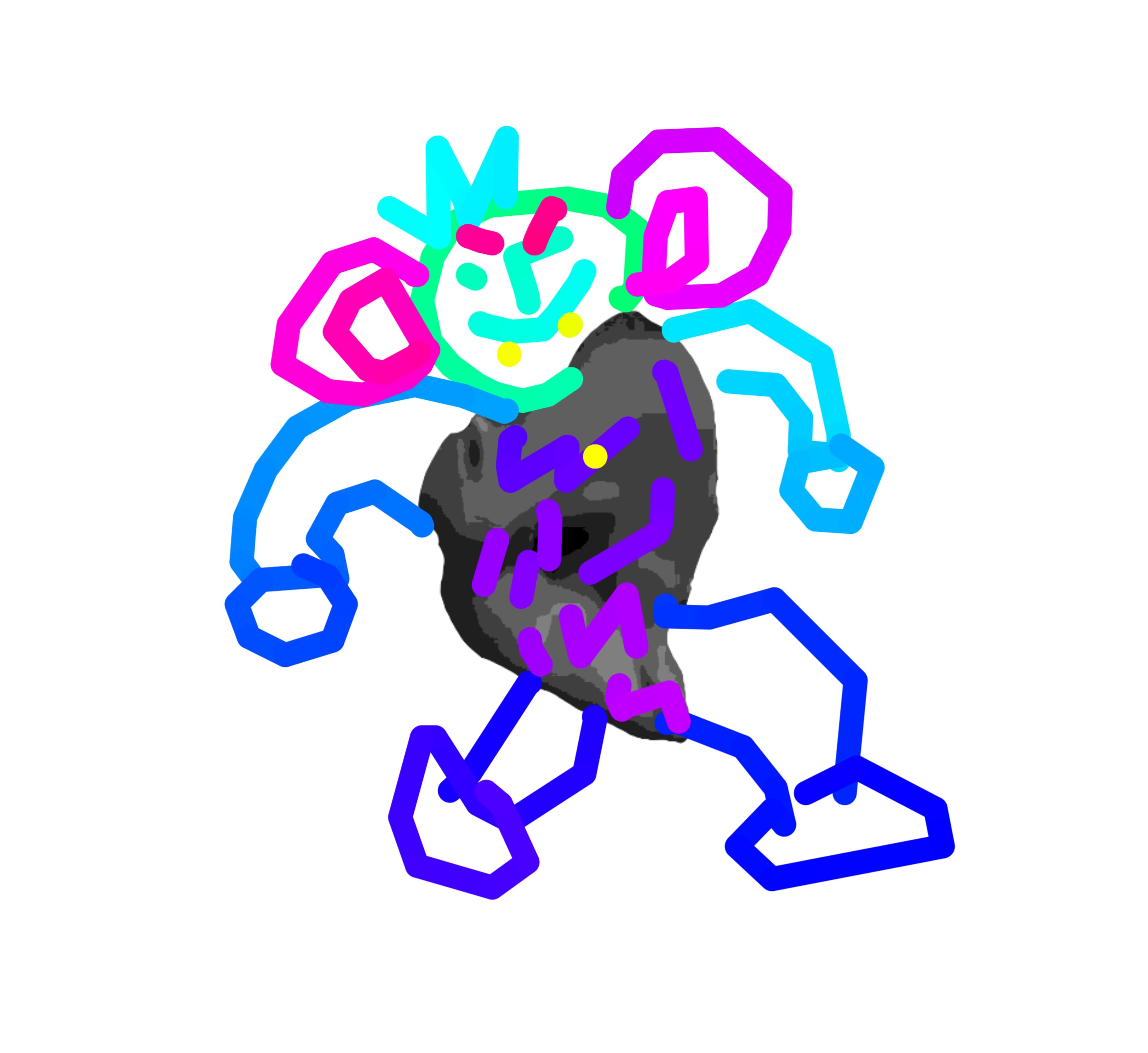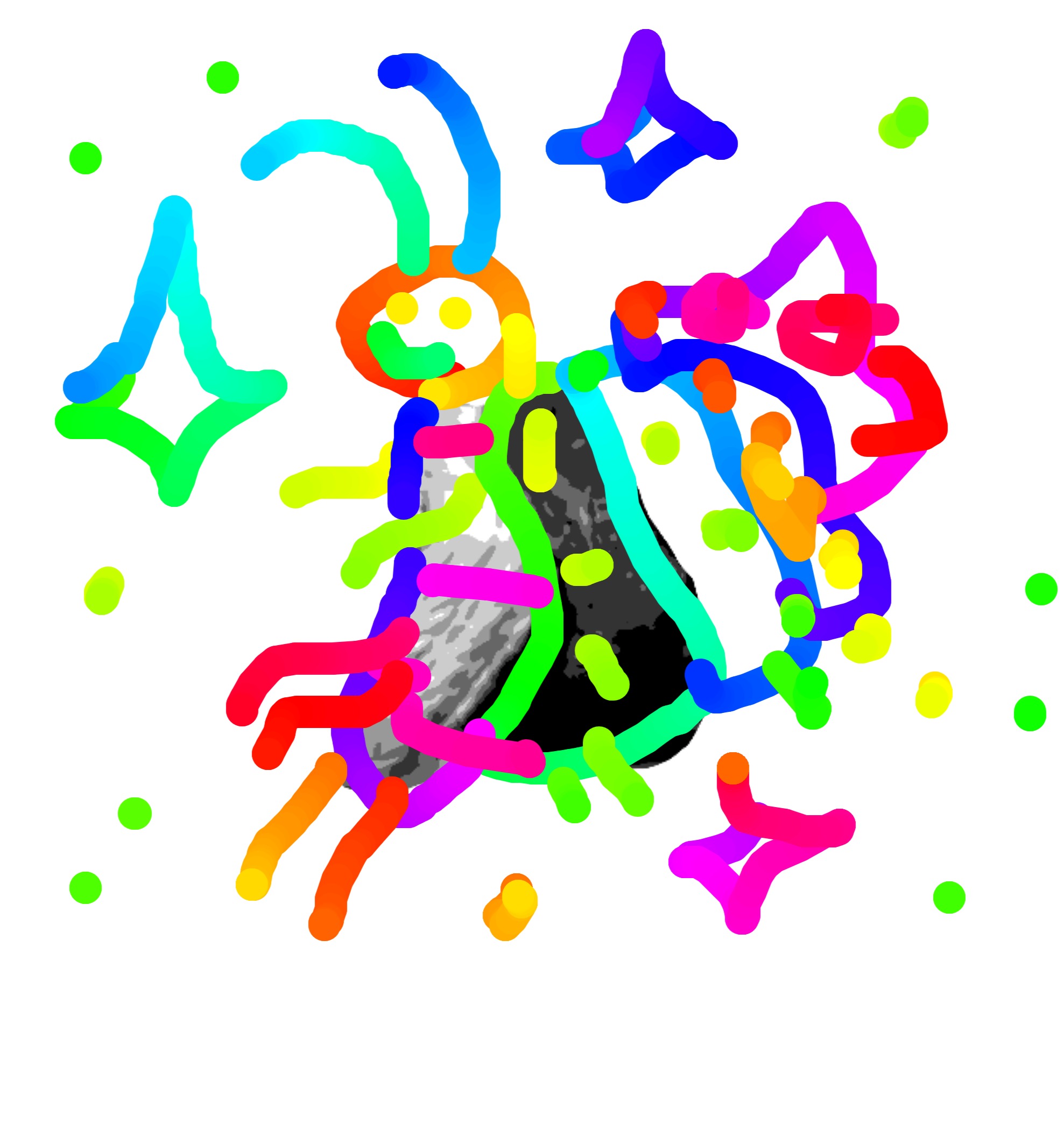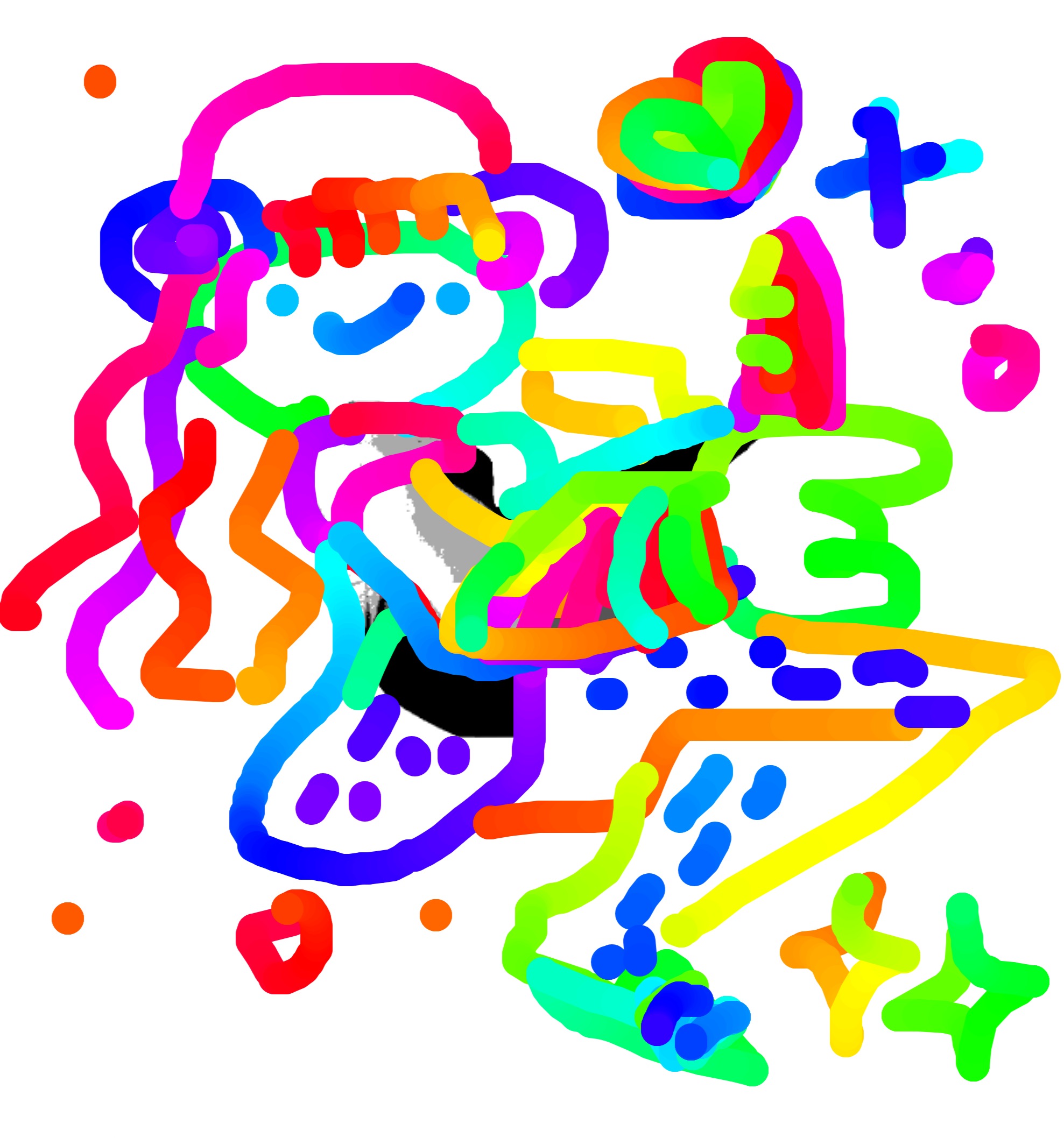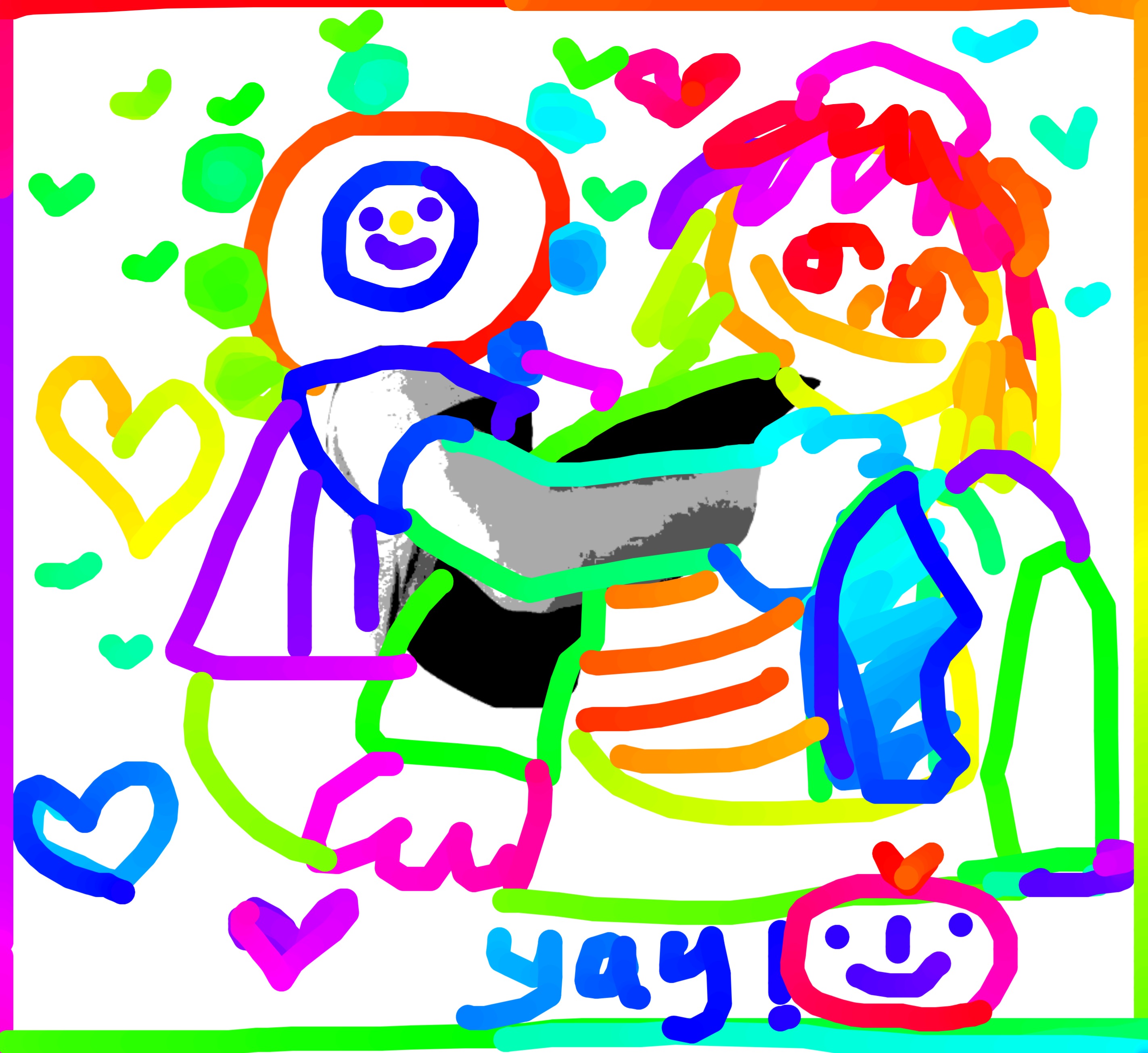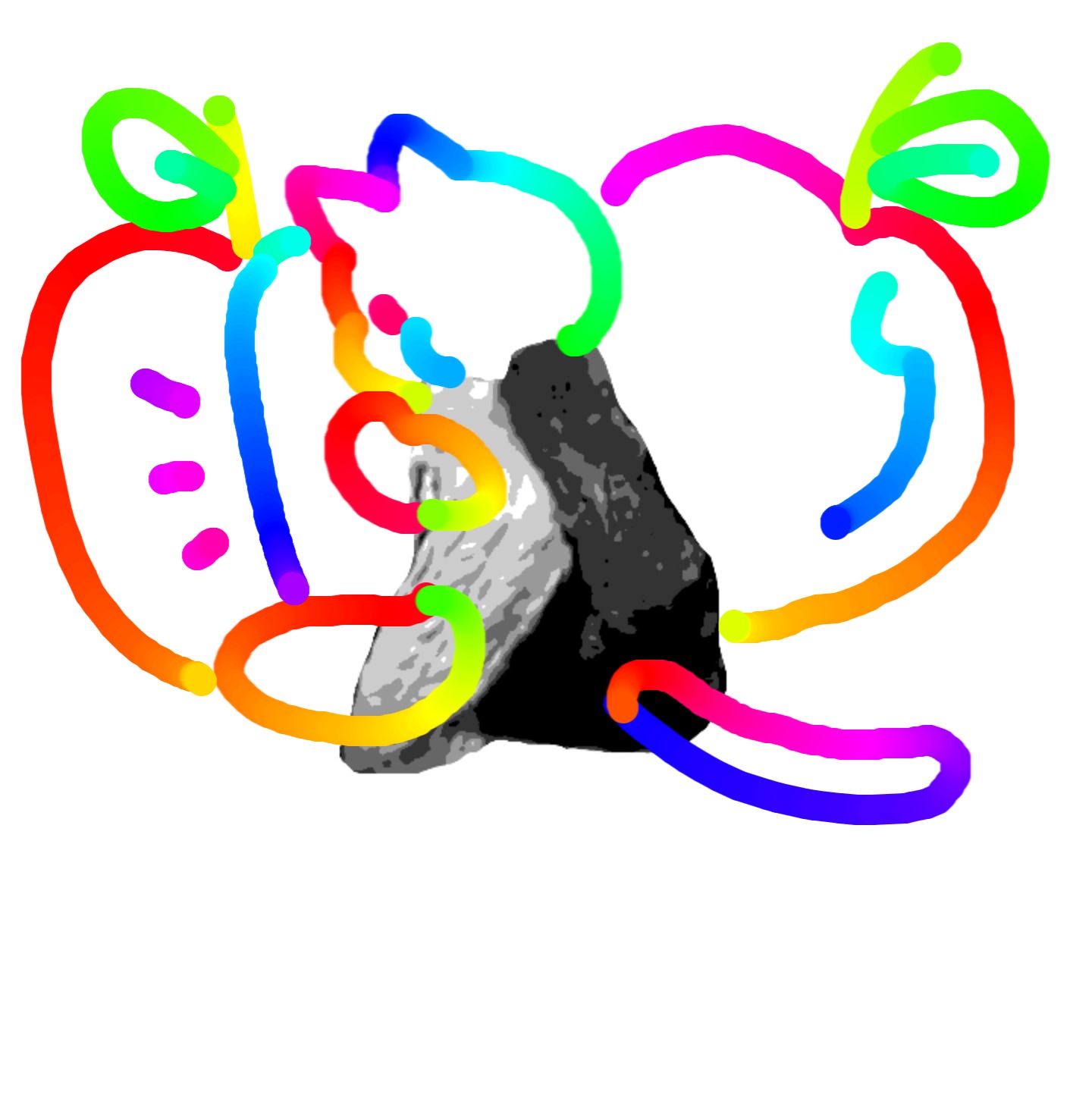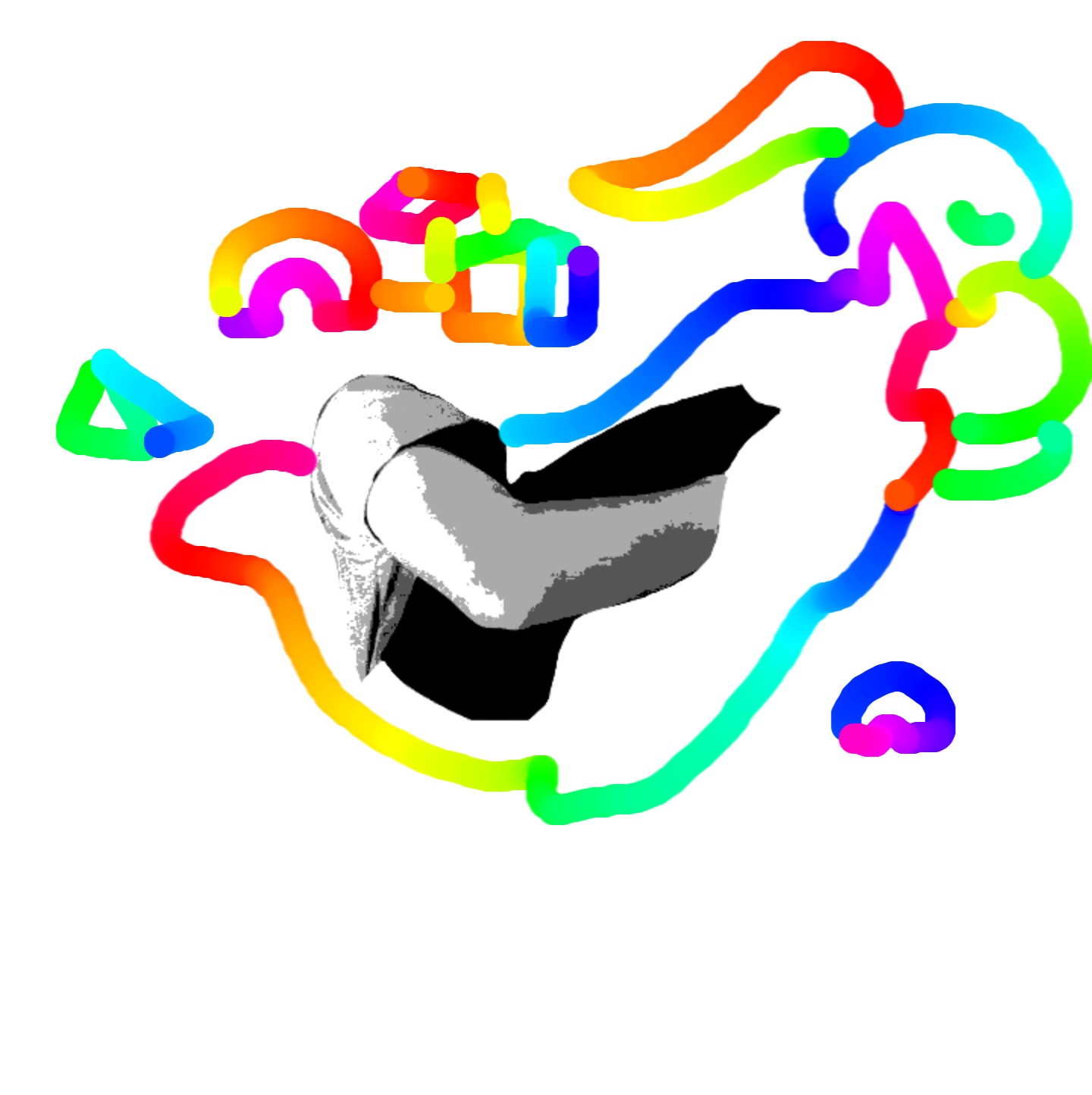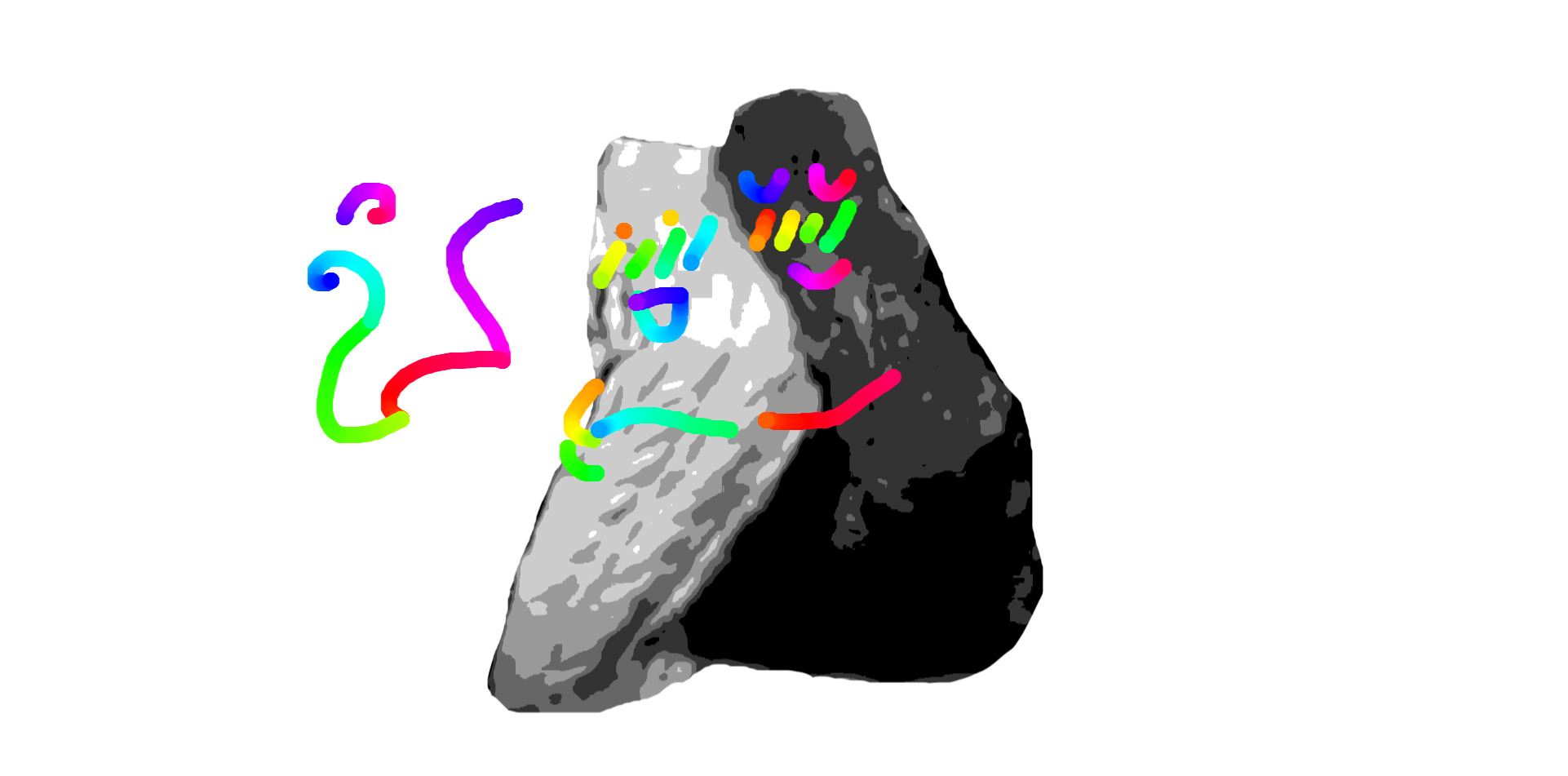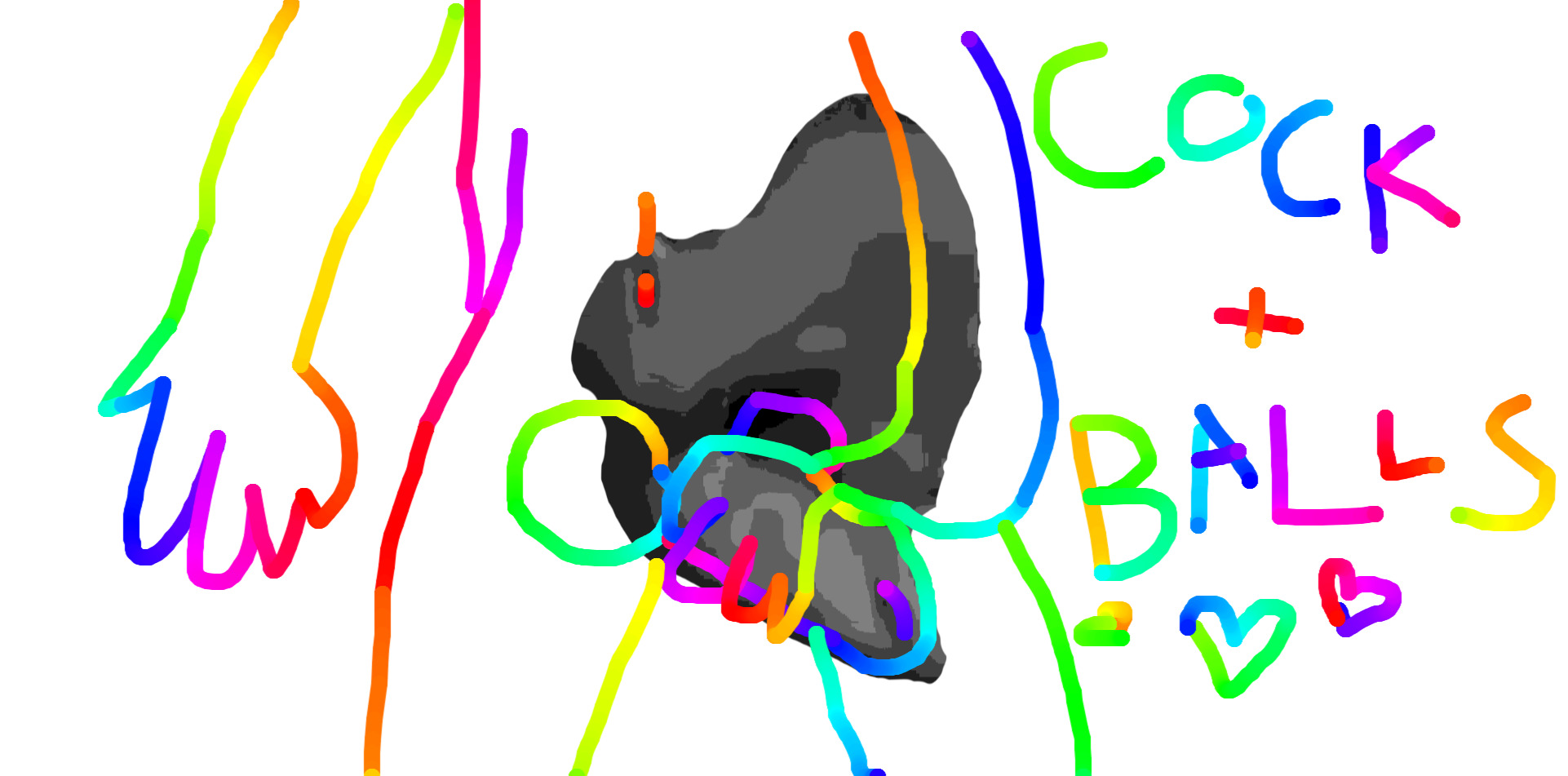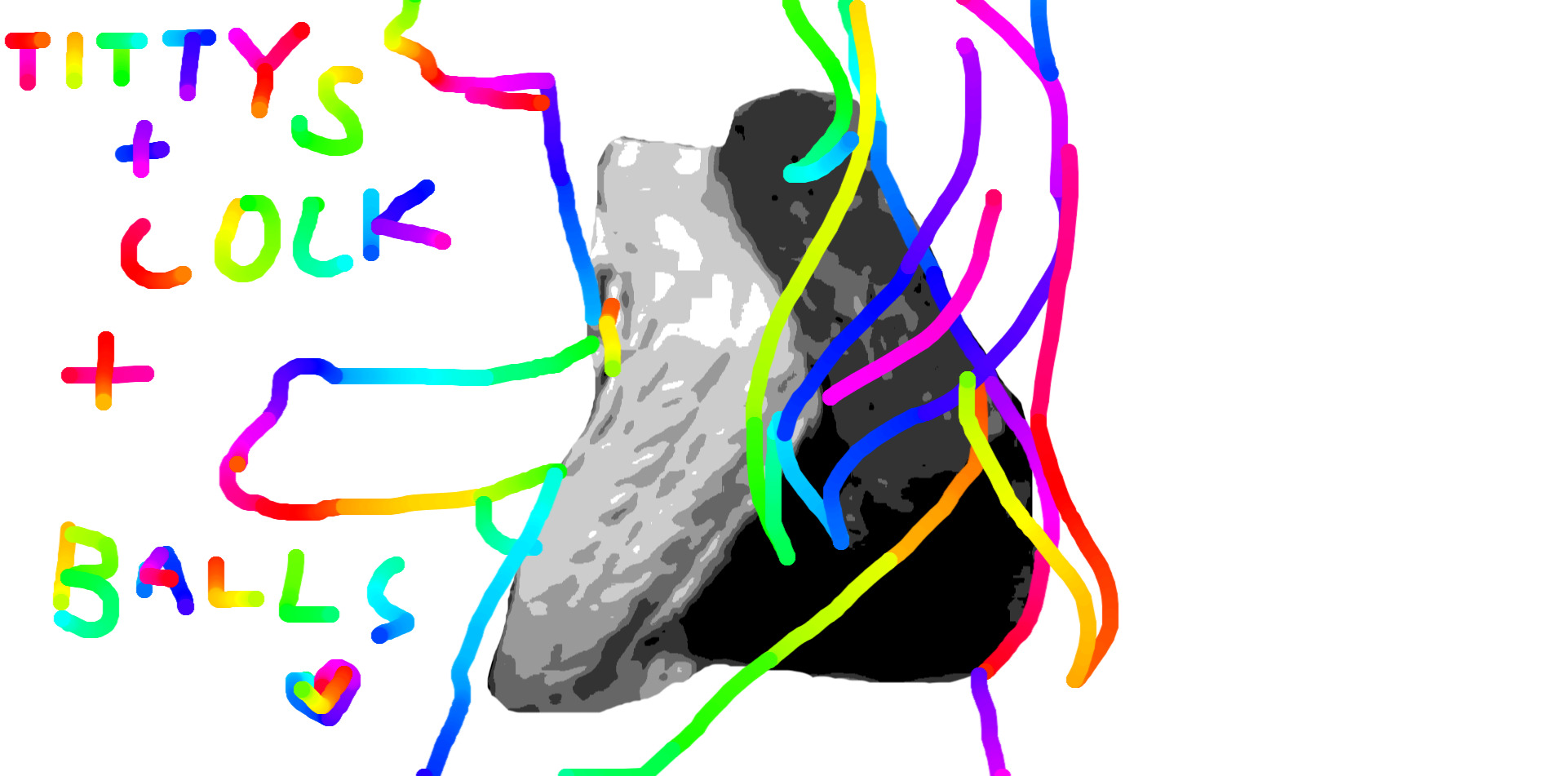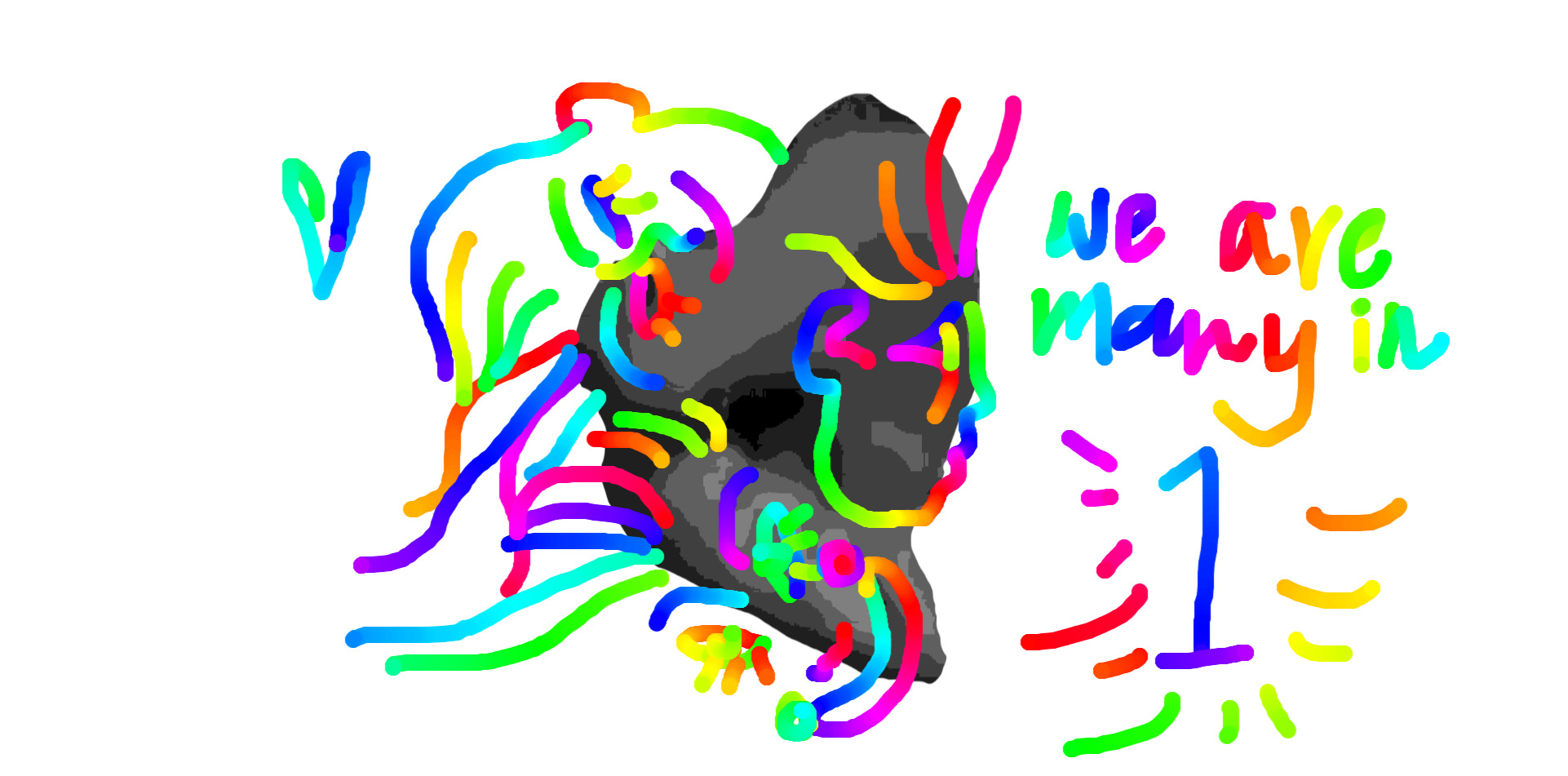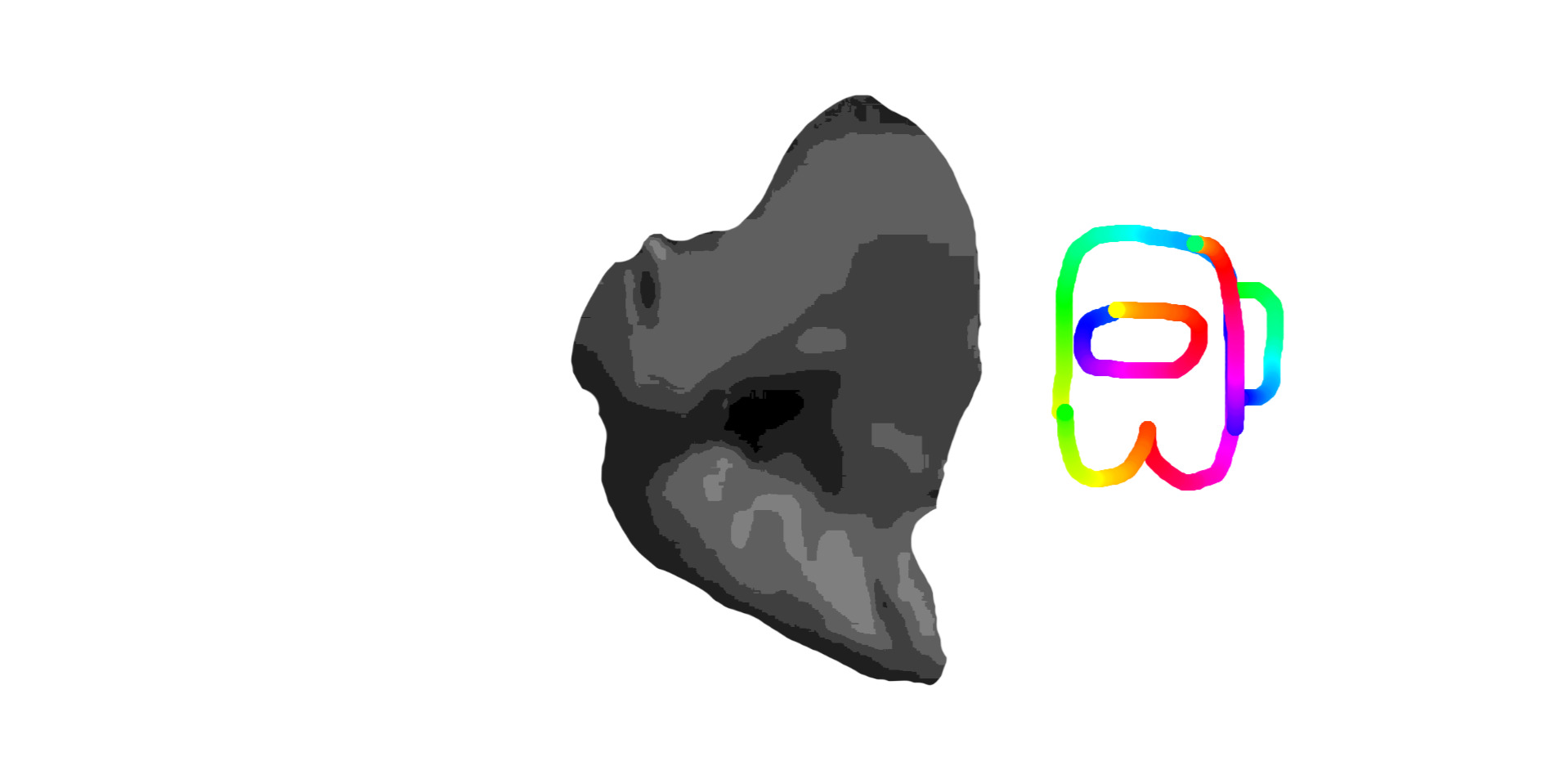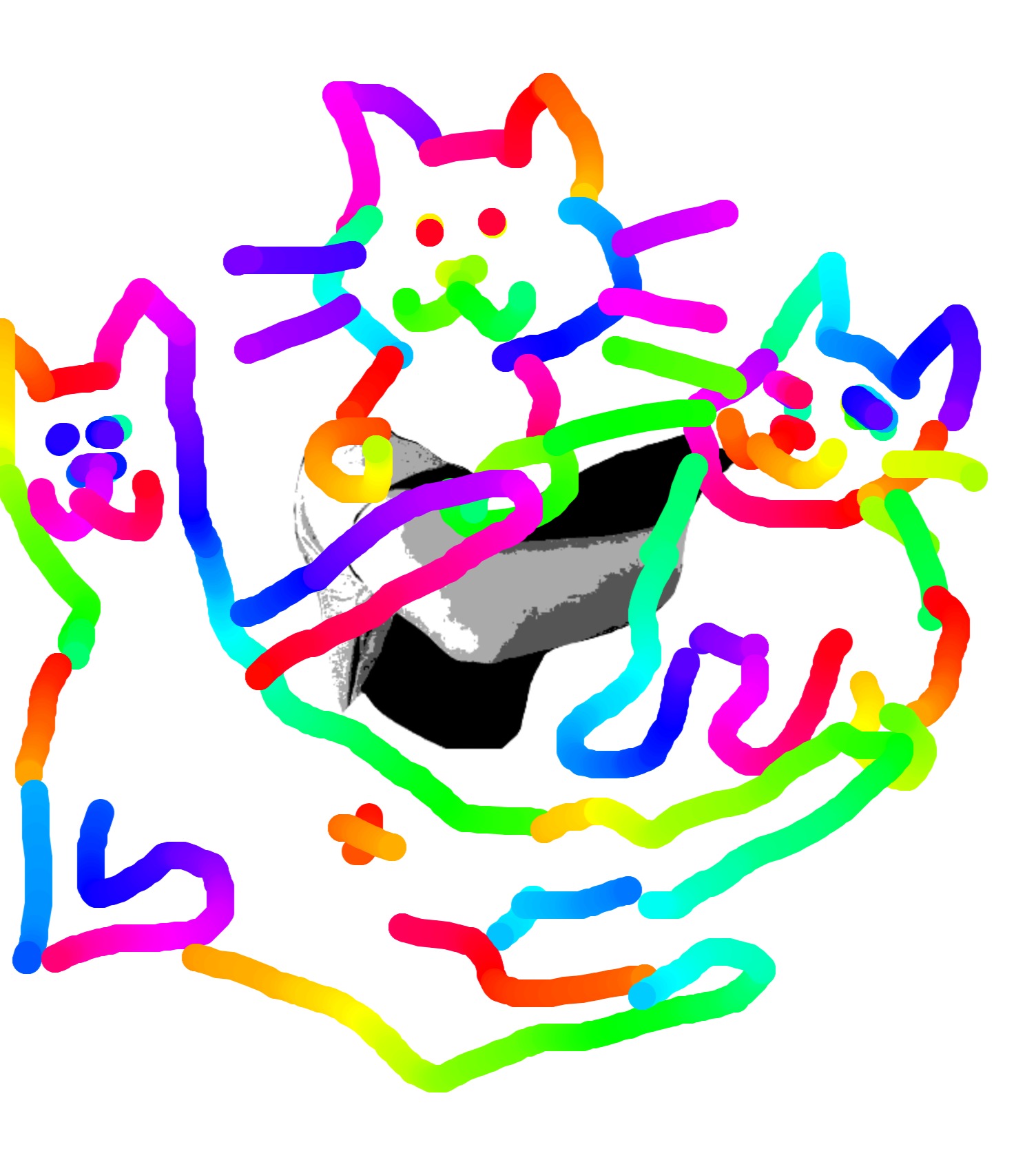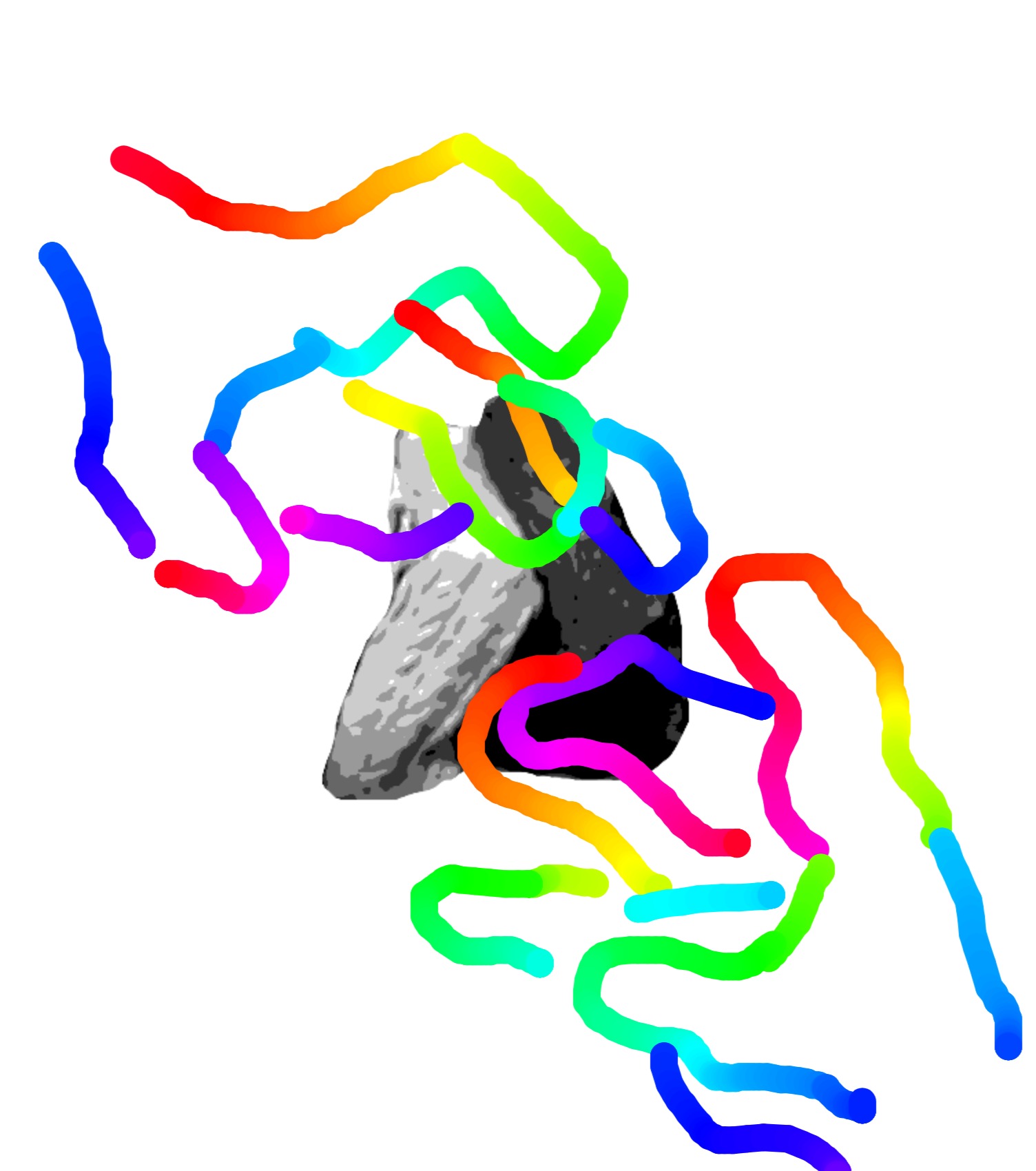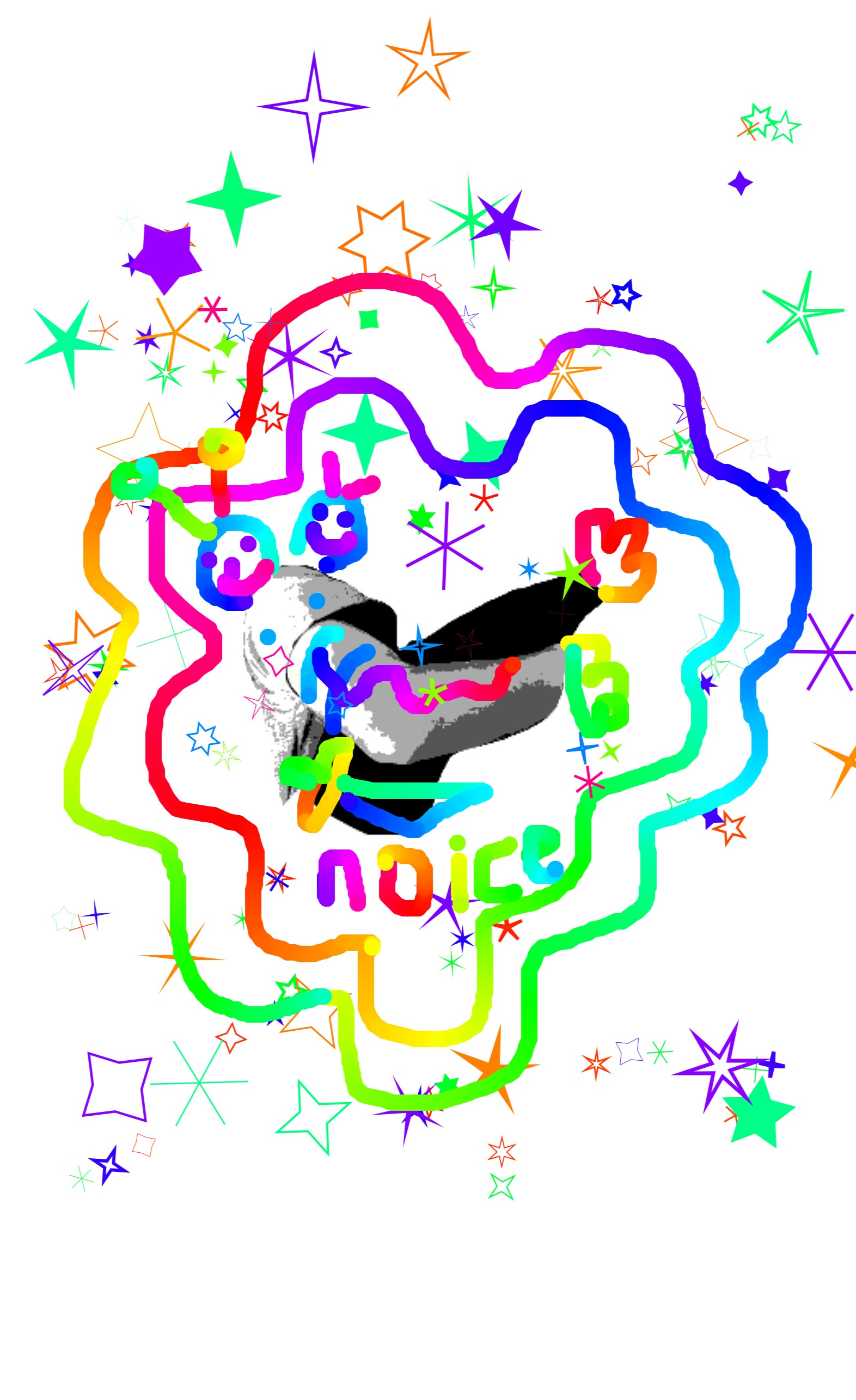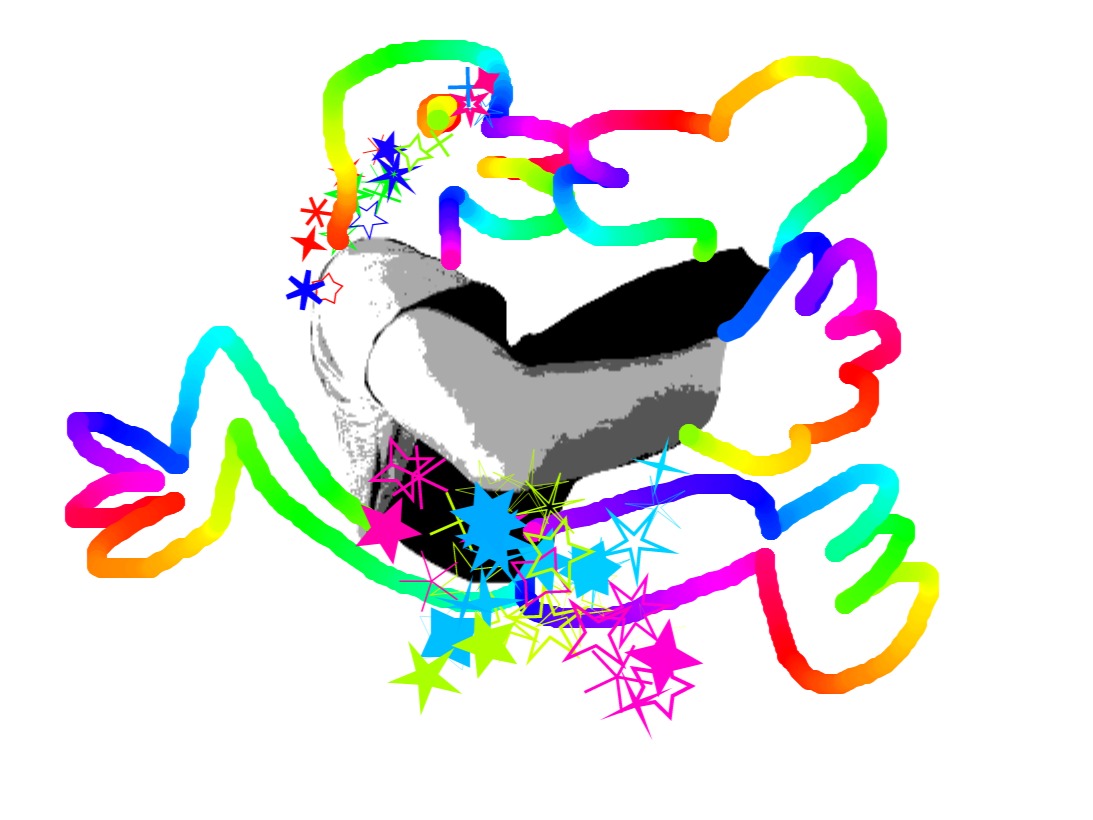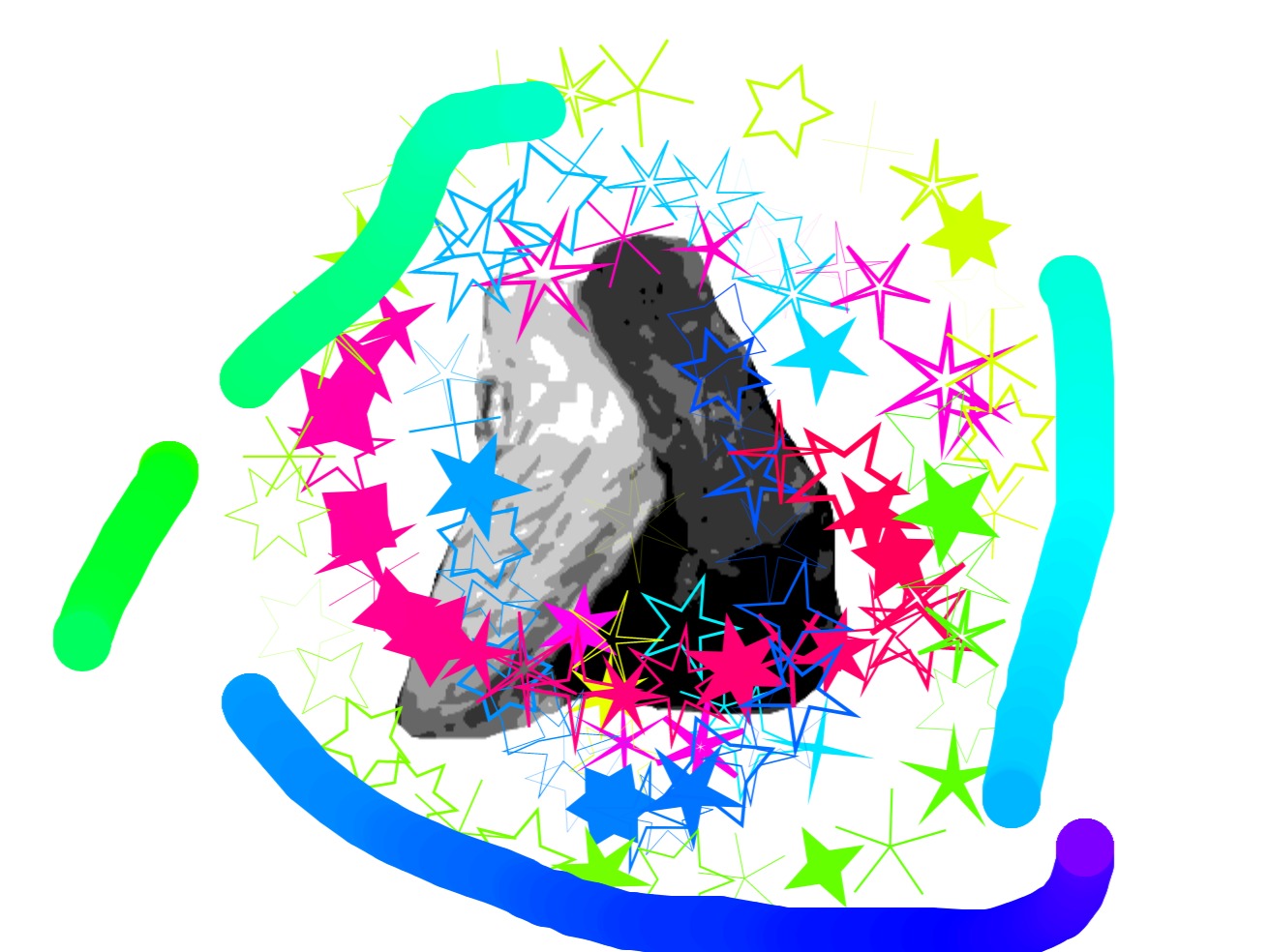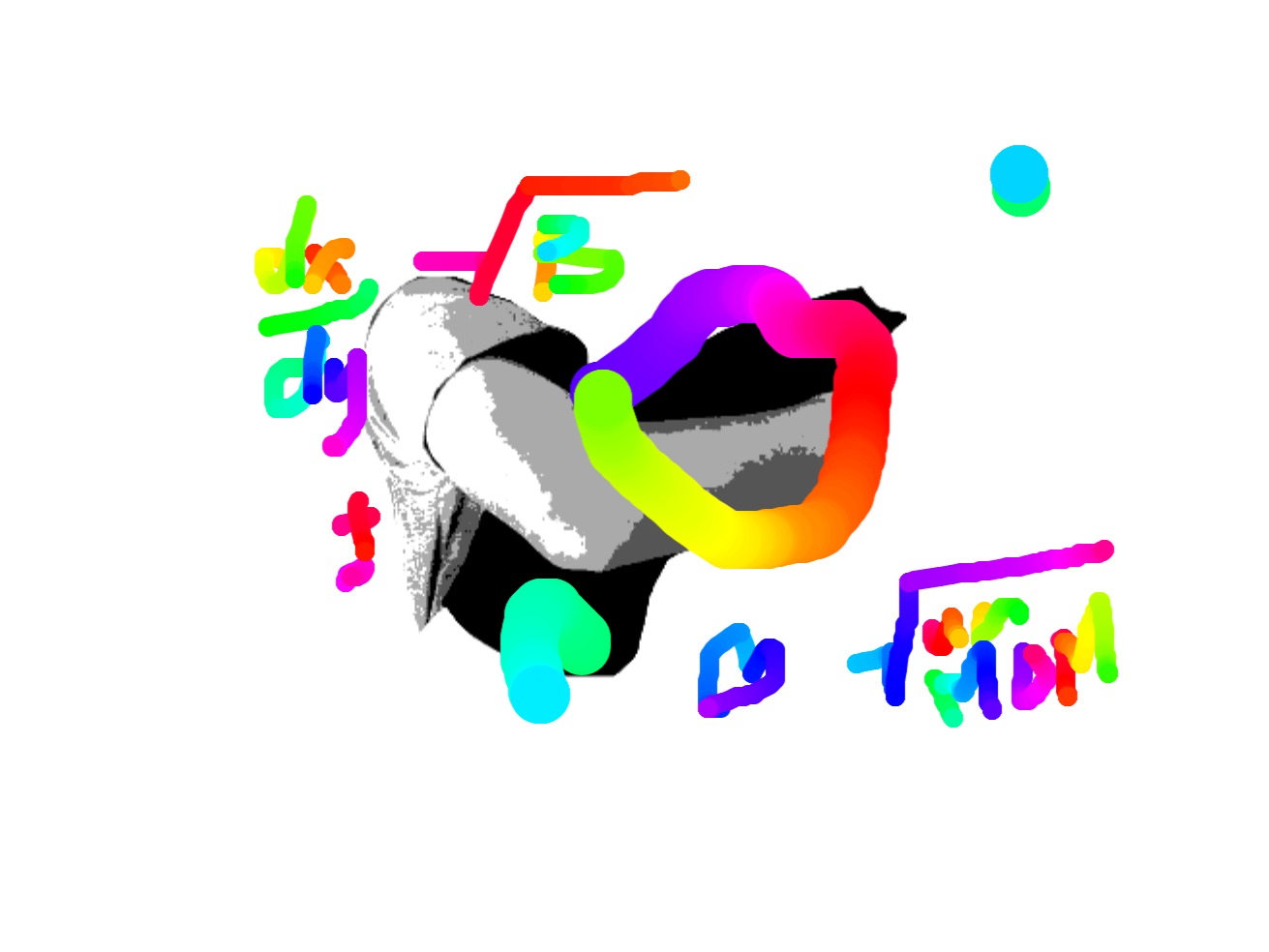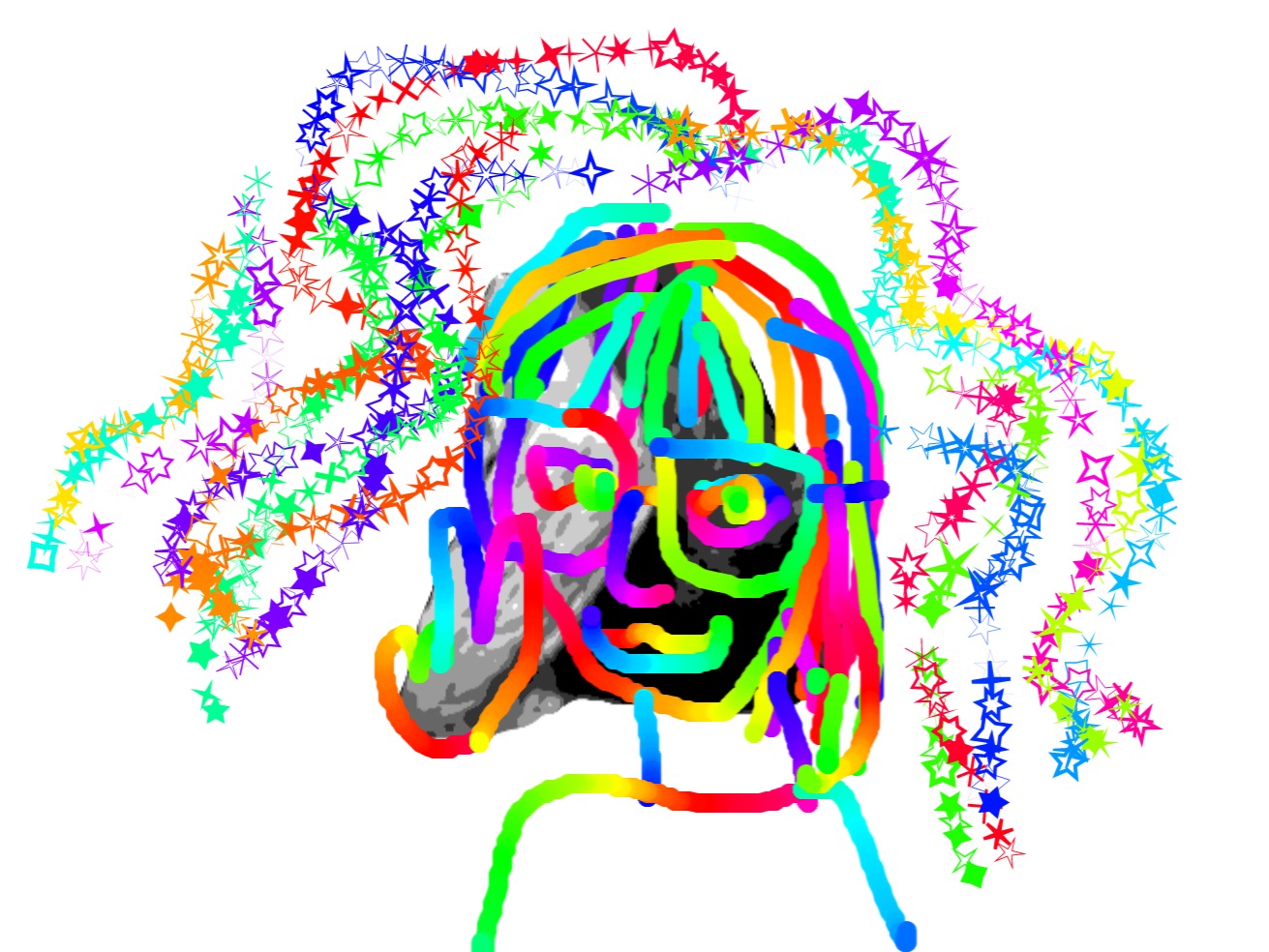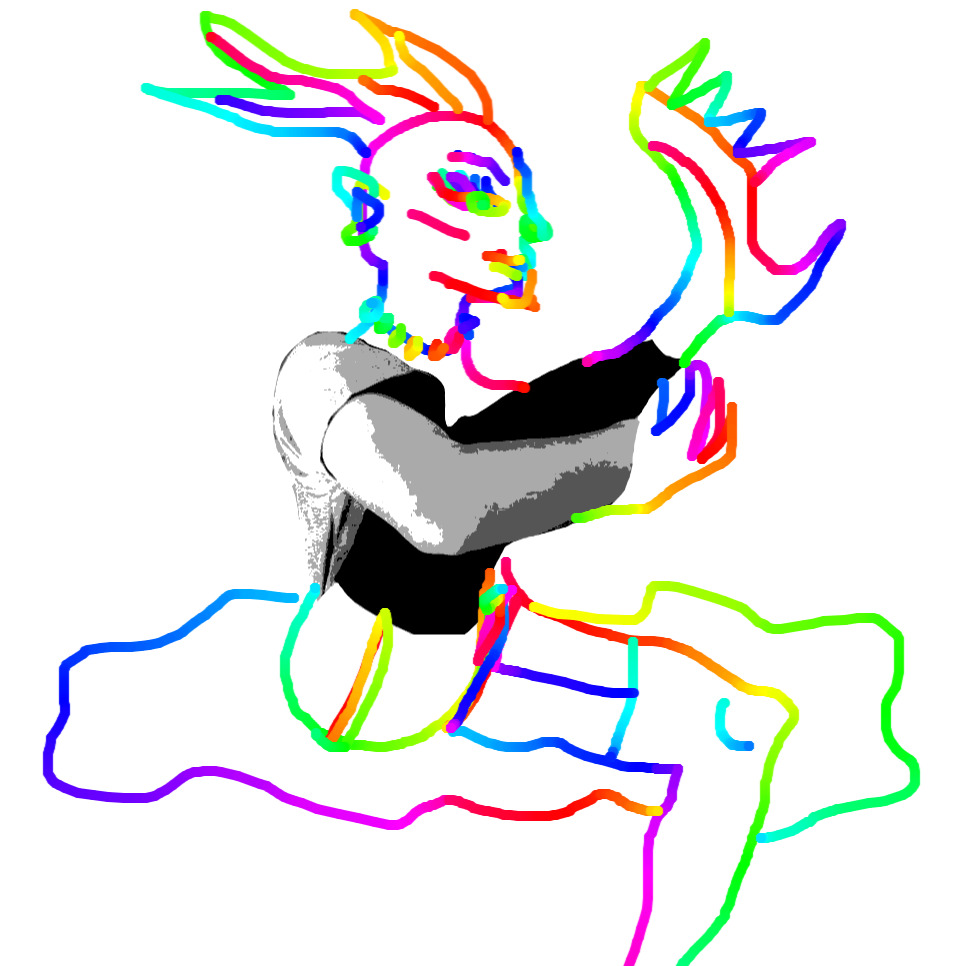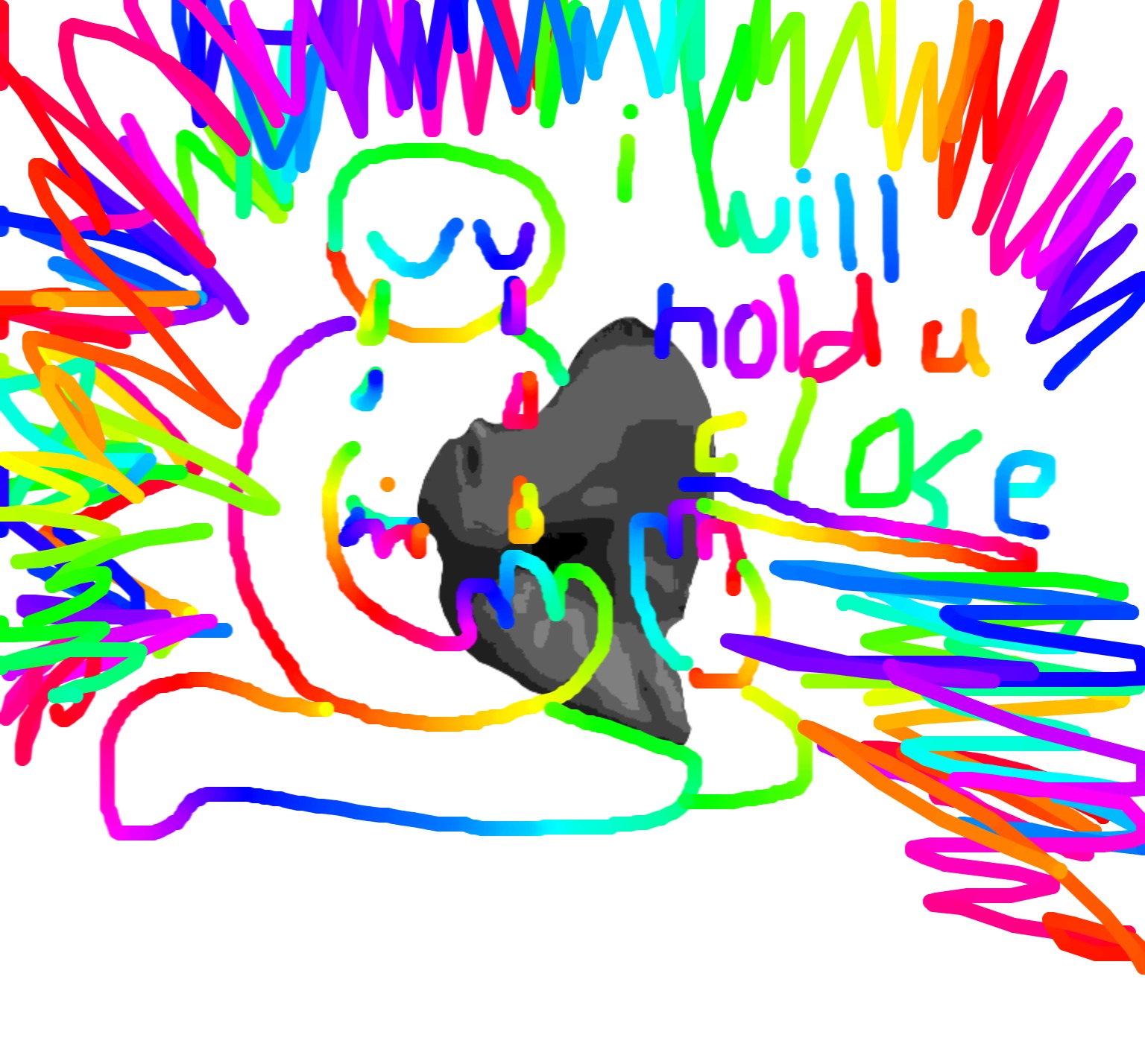About s/f/wønderland
Background
⚠️ Note
This section was last updated on September 4, 2022. Any later developments beyond this date may not have been recorded or accounted for on this page.
s/f/wønderland was first conceptualised as a senior capstone project for my B.A. in Design Media Arts at the University of California, Los Angeles. My main intention for this project was to create queer art that is research-driven and collaborative, yet no less personally resonant. I knew from the start that this was going to be about queer existence(s) in my home context, namely Malaysia and Singapore.
Malaysia and Singapore both share similar histories as former British colonies, and are both ruled by conservative-leaning governments in their respective contexts. Due to :media censorship policies, :state erasure of queer history, :criminalisation of acts of sodomy, and little to no protections of LGBTQ+ rights (among many other factors of queer stigma), looking for support systems, credible queer knowledge, and positive queer representation in these regions is, to say the least, really fucking hard. In the field of academia, most research on local queer communities here focus on healthcare and policy-related topics (and arguably necessarily so) - although such studies are already limited in number to begin with.
Given the general gap in literature and documentation regarding queer communities in these places where I grew up, I wanted to reflect on my role as a queer media artist that grew up in this environment, and explore queer existence and community creation in the age of social media. In particular, I was interested in how queer people learned about, and then later navigated queerness while existing in a mediated media landscape + social infrastructure that :denies LGBTQ+ people any positive representation and legal protections.
Method
During my spring break, I invited 6 friends to discuss their observations and experiences navigating social media as people who:
- identified somewhere under the queer umbrella; AND
- had experiences growing up in Malaysia and/or Singapore.
All of us happened to be born in the 90s or early 2000s, and began using the internet in our late-primary ~ early-secondary school days.
Through our conversations, we learned that most of us had our first encounter of queerness through fan fiction and queer fandom pairings on the Internet - many shared experiences reading slash on fanfic.net, in particular. This media platform provided an alternative source of knowledge and guidance beyond parental figures, state-controlled media, and educational institutions.
As such, for my capstone project, I wanted to focus on :how queer (re)imaginations operate through media appropriations of censored content, and how it can become a form of creative resistance against oppressive state-enforced infrastructures. While every participant has their own understanding of :the role queer fandoms play in the broader political environment, most believe that the transgressive nature of queer fan-made narratives and worlds are not merely avenues for escapism, but are also capable of shifting attitudes and perceptions concerning queerness on a broader societal level.
Installation Setup
For installation + interaction instructions, please refer to this installation profile PDF.
Given that all senior capstone projects were expected to be exhibited at my department's undergraduate senior show, s/f/wønderland was also conceptualised as a physical installation piece.
In an ideal installation setup, the right half of this browser window would be displayed on a desktop monitor, whereas the left half would be projected onto a wall directly behind the participant seated in front of the desktop monitor. The participant would be provided a set of head/earphones for a private aural experience, and a mouse and keyboard to navigate the website.
s/f/wønderland was first exhibited at the Experimental Digital Arts space (EDA) in the Broad Art Center, UCLA for the Design Media Arts Undergraduate Senior Show of Spring 2022.
To navigate model viewer above:
Scroll to zoom; Click+Drag to rotate; Shift+Click+Drag to pan.

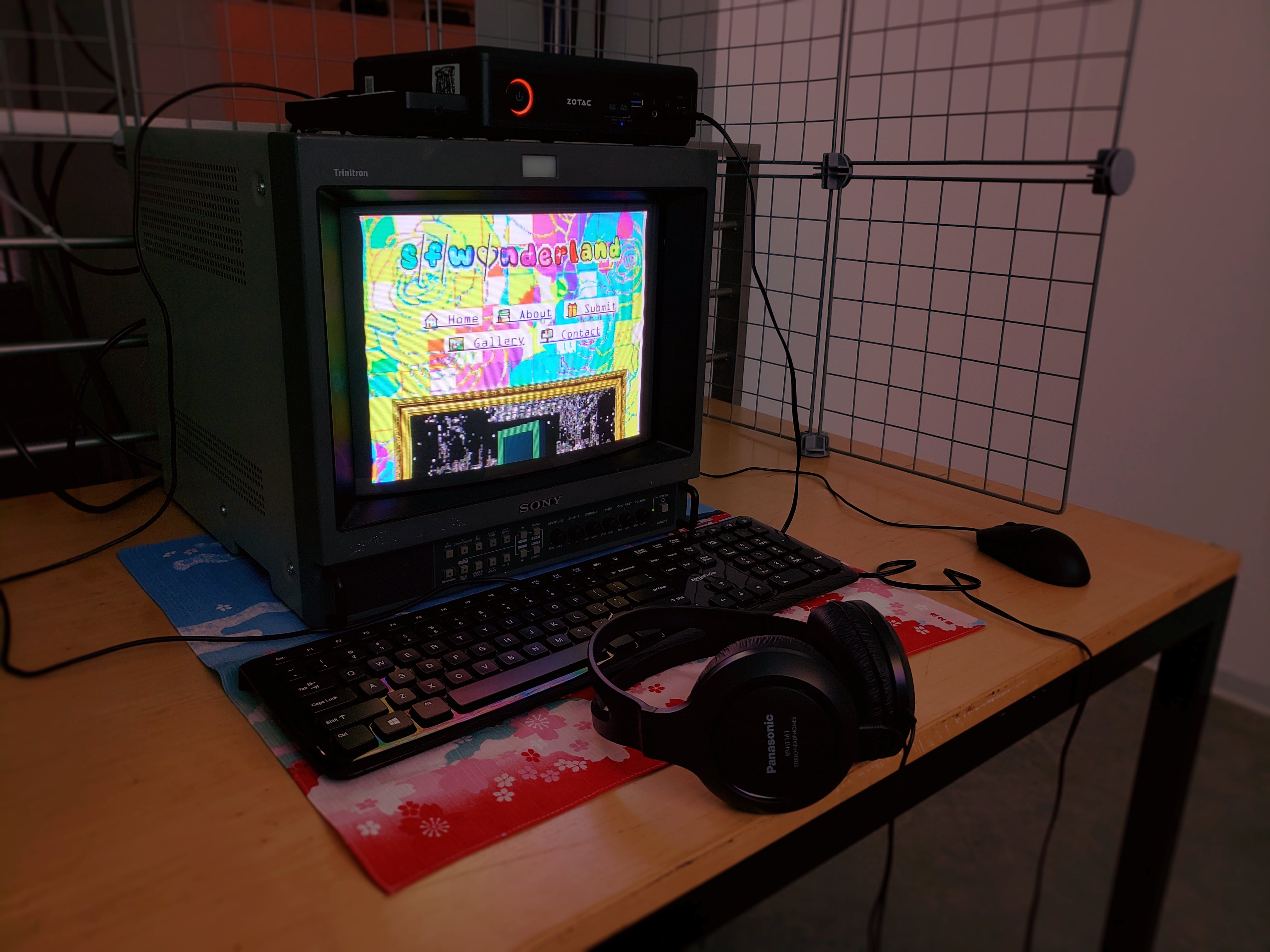
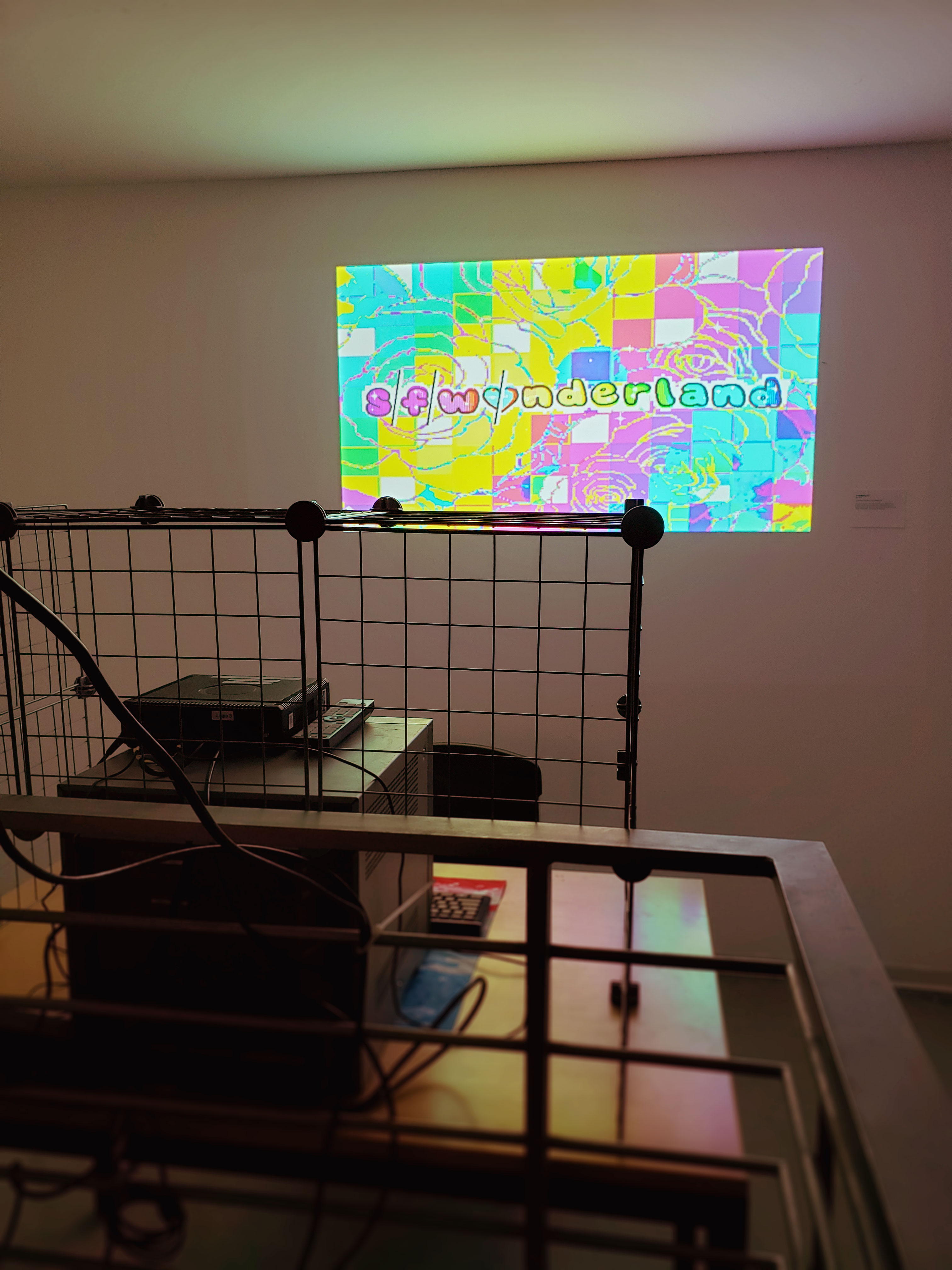
References
Zoyander Street’s Interactive Portraits: Trans People in Japan was a huge inspiration not only for this project, but also for my media art practice in general. It helped me realise that game-making and ethnographic research do not have to be mutually exclusive practices; that research can culminate into something other than a densely-worded dissertation paper; that games can be a new way of understanding and engaging with the knowledge we create. It’s the game that really got me excited about the practice of game-making and conducting research as an artist, so huge kudos to Zoyander and their work! Zoyander also wrote an insightful chapter about community histories and challenging normative research practices in Bo Ruberg and Adrienne Shaw’s book titled Queer Game Studies, which was helpful in informing my approach to s/f/wønderland.
Other research references / inspirations include:
- Chaoyang Trap’s article on Chinese fanfic writers navigating post-AO3 ban era;
- cartographic charts marking queer presence + history in Queering The Map and Pink Dot SG’s Love Lives Here;
- this online guest speaker event hosted by The Japan Foundation, New York, titled :Boys' Love: The History and Transformation of BL in Asia.
- KidPix (vikrum made a browser version of it here! super cool stuff!!);
- and last but not least, :this funny little joke Tumblr pulled on April Fools 2022.
Acknowledgements
Land Acknowledgement
Although s/f/wønderland is primarily rooted in the context of Malaysia and Singapore, this project was created while I was residing on the traditional land of the Chumash and Tongva people. As a beneficiary of the resources and support granted by the University of California, Los Angeles, I recognise my complicity in the historical and ongoing legacy of land theft initiated by colonial settlers since the 18th century. As an international student, my access to queer safety and freedom of expression has not been without my participation in settler colonialism. Moving forward, I want to continue confronting what it means to live on stolen land, and further contemplate ways in which we can support disenfranchised and Native communities. For starters, I recommend reading Eve Tuck and K. Wayne Yang’s Decolonization is not a Metaphor, an article which foregrounds how settler colonialism operates and what “decolonisation” really entails.
Thanks
To Jenna Caravello, Michael Luo, and the Class of DMA:159 Senior Capstone (Spring 2022), for their continued support and feedback throughout the school term.
To Eddo Stern, for his mentorship throughout my Independent Study course in which we read and discussed books on queer game studies - although much of what we read was based in an American context, it was ultimately helpful in putting my own experiences in Malaysia and Singapore into perspective.
To Lauren McCarthy and Tyler Stefanich, for their advice and assistance re: ideas for installation setup.
Special Thanks
To all participants, for their continued contributions and their thoughtful engagements with this project.
To Shon, for sharing her bachelor’s dissertation titled “Love, Queerly Reimagined: Negotiating Normativity in Boys’ Love (BL) Fandom Cultures” with me, and for being a supportive and inspirational presence throughout this journey.
To Laurent Yee, for encouraging me to explore disruptive interface designs, and being a great friend with whom I can get excited about similar creative interests re: collaborative art-making, using and making non-conventional creative tools, experimental designs etc.
To Finn See, for collating their abundant library of articles, policy papers and other resources pertaining to LGBTQ+-related topics in Malaysia during my research.
To Zedeck Siew, for sharing his wisdom and advice for navigating research and art-making as a Malaysian in an anglocentric space.
To Patrick Michael Ballard, for being a welcoming and friendly presence in the Game Lab, and for always being up for a chat re: art-making and one’s relationship with their own practice.
To White Stapler, for lending me their mini projector for my midterm presentation.
Stuff I used
Sounds from freesound.org
- catpurrchirp by dreamstobecome
- Sparkle 1, Sparkle 2, Sparkle 3 by zuben
- TinyBell by Haasenstein
- Fantasy Magic Button by solo654
- Heal - Rpg by colorsCrimsonTears
- Snap Layered 01 by JoshuaPomeroy
- TV Restart by younoise
- Scrambled Telecommunications by Raining-On-Saturn
3D models from TurboSquid
- Spoon Fork Knife Cutlery Set 3D model by jondetski
About the Artist
HUA CHAI (they/he)
Born on the cusp of the Internet age in Malaysia, Hua (@huazzers) is a gender-glitched experimental media artist who is inspired by how Internet phenomena interfaces with individual expression, community interactions, socio-political infrastructures, and identity formation. Hua makes playful interactive digital projects (dubbed as “games” for convenience’s sake) which act as a collective portrait of their observations and experiences.
They hold a B.A. in Design Media Arts and are currently pursuing an M.F.A. in Media Arts, both from the University of California, Los Angeles. Hua’s animations and video games have been showcased at events like Cartoons Underground (Singapore), Animation Chico (USA), Melbourne Queer Games Festival (Australia), and Indiepocalypse.
To learn more about their work, please visit: huachai-portfolio.carrd.co
Any questions or feedback?
Feel free to get in touch with me!
:x More info on Malaysia and Singapore LGBTQ+ policies
For more information on Malaysia and Singapore’s policies regarding the LGBTQ+ community, refer to :the Penal Code Section 377 as a head start. I’d also recommend reading about laws concerning :censorship, :“fake news” and :“foreign interference” in these countries, too. As queerness is often erroneously framed as a Western import in these countries, many have reason to fear that these media laws might be misused to restrict their freedom of (queer) expression.
:x Foreign Interference
Here's some articles about :FICA in Singapore:
- THE STRAITS TIMES: Measures in S'pore's foreign interference law to counter hostile information campaigns take effect from July 7.
- ALJAZEERA: 'Hard choices' for Singapore media after controversial law passed.
- CHANGE.ORG: #WhatTheFica petition.
:x PenalCodeSection377
Whereas Britain has started recognising same sex marriage since 2014, its former colonies such as Malaysia and Singapore have continued to uphold :the British colonial penal code Section 377, even long after their respective national independences. Singapore's ruling government only very recently announced its decision to repeal Section 377A on August 21, 2022 during their Prime Minister's National Day Rally speech. However, this was followed by their insistence on upholding LGBTQ+ content restrictions in local media, as well as its decision to uphold heterosexual definitions of marriage and families in upcoming constitutional amendments.)
To learn more about other policies that endanger LGBTQ+ lives in Malaysia and Singapore, please refer to the following articles:
- QUEER LAPIS: LGBTQ Legal Guide series - Part 1 and Part 2 (Malaysia)
- HECKIN UNICORN: Here are all the anti-LGBTQ regulations in Singapore // LGBT Rights in Singapore (Singapore)
:x Censorship
This Medium article titled Internet and Sexuality: LGBTQ Experience in Malaysia by PELANGI Campaign gives a good overview of the media laws governing the nation's freedom of speech, as well as a study of queer Malaysians' experience navigating online spaces.
As for Singapore-related news, Here are all the anti-LGBTQ regulations in Singapore // LGBT Rights in Singapore" posted by Heckin' Unicorn includes a section about media restrictions about LGBTQ+ protrayals in Singapore. The rest of the article also talks about other laws that curtail freedoms and material rights of LGBTQ+ peoples in Singapore, so highly recommend reading those, too!
If you're wondering whether Singapore's repeal of 377A has any further implications regarding LGBTQ+ media policies, that is unfortunately not the case at this point in time. (Read: BLOOMBERG: Singapore Keeps LGBTQ Content Curbs Despite Gay-Sex Ban Repeal).
:x Fake News
PELANI Campaign's Medium article includes a section which describes how the Communications and Multimedia Act 1998 (CMA) in Malaysia has been "actively (ab)used against against human rights defenders, political dissenters, or ordinary people who post offensive remark about the Prime Minister."
Here's another article which is about :POFMA in Singapore:
:x Queer History
While there is limited scholarly documentation of queerness in pre-colonial Malaysian and Singaporean history, evidence of trans / non-binary genders and same-sex partnerships in traditional and indigenous Asian societies suggests that queerness is not a recent development in these countries, nor is it an import from the West (not exclusively, at least.) What is a recent development and an import from the West, though, is the introduction of laws which systematically discriminate against (if not prosecute) queer peoples, one of the most significant turning point being the enactment of :the colonial British Penal Code in the 20th century.
Below are some resources to learn more about queer histories in Malaysia and Singapore, some of which include timelines of when/how anti-LGBTQ+ infrastructures became established in these regions:
- Adam Tambakau's video essay :LGBTQ+ History in Asia provides a great overview of queer history in Malaysia and Singapore (among other Asian countries), as well as the colonial origins of Penal Code 377A.
- In Unravelling Queer Singapore: Bugis Street, Gaiatri Sasitharan documents the oft-undermined history of Bugis Street as a queer-positive safe space for the LGBTQ+ community, and how national institutions eventually bulldozed these queer spaces (along with their histories) in favour of modern capitalism, urban development and conservative cis-heteronormative agendas.
- Queer Visibility In Islamic History is a short photo essay by Quasa, a peer support and community network for queer Muslims in Singapore.
- In this section of :The Power of Quasa, an podcast interview hosted by New Naratif, two founders of Quasa discuss what it means to reconcile both queer and Muslim identities, addressing topics such as: how queerness is understood and expressed in Islamic history; how religious authorities have weaponised religion and politics against queer Muslim minorities, and; the distinctive experience(s) of navigating queer Muslim identities in the context of Singapore. There is also a full transcript of this interview on the New Naratif website.
- QUEER LAPIS: Comparison of Syariah Laws that Criminalise Same-sex Relations by State. Note the year(s) in which these laws were implemented.
- Here is a Twitter thread authored by Dorian Wilde, a trans and sexual minority rights activist and founder of Transmen of Malaysia, which compiles a series of literature excerpts and artefacts containing evidence of trans/androgyny and bi/homosexuality being associated with spiritual divinity, royal entertainment and commonplace sexual cultures in Malaysia up to the late 20th century.
:x Different Understandings of Queer Fandoms
Some participants shared that they saw queer fandoms as a way to “correct” or “hack” inaccurate / negative / violent depictions of queer people in mainstream media, while others are more inclined to view fandoms as an alternative outlet for “reimagination” which provides its own form of agency.
:x Queer Reimaginations
I drew this phrase from Shon's bachelor's dissertation title, Love, Queerly Reimagined: Negotiating Normativity in Boys' Love (BL) Fandom Cultures, in which Shon addresses the conflicting debates on whether Japanese and Chinese BL fandom cultures should be considered a "queer," "transgressive," or "(cishetero)normative" media genre. While BL has been criticised for being complicit in reflecting "societal heterosexism, phallogocentrism, gender binaries and misogyny," Shon argues that such criticisms are also based on heterosexist assumptions which both ignore queer interpretations of BL and undermine the genre's capacity for sexual liberation, gender binary disruptions, and resistance against capitalist, (cis)heteronormative infrastructures.
Though Shon's discussions are specifically concerned with BL in the context of China and Japan, we similarly see BL playing a significant role in facilitating safe, queer-positive spaces for those in other conservative countries, including Malaysia and Singapore, where non-normative practices are curbed and policed by the state via surveillance, censorship and other legal actions / restrictions.
Operating to provide BL content for no financial gain (Yang and Xu 2017: 7–8), and resisting commercial censorship through fan discussions, queer fanart, and fanfiction (Wang 2019: 46), BL fandom cultures center women as well as gender and sexual minorities’ desire, articulate their prioritization of fantasy, pleasure, and enjoyment over the ideals of money and profit that benefit oppressive capitalist systems, and voice their dissatisfaction regarding the top-down control of sexuality and censorship of marginalized identities.
— Love, Queerly Reimagined: Negotiating Normativity in Boys' Love (BL) Fandom Cultures
So how does this creative underground resistance navigate through a heteronormative regime? According to Kristine Michelle Santos, BL is "heavily negotiated within religiously conservative spaces" in that BL fans have developed their own insider language, which is often defined by "ample visual cues" in place of something more explicitly queer, so that they can enjoy BL without the fear of catching the scrutiny of conservative authorities / general public. She talks more about this in :this guest speaker event.
While it is unfortunate that these codified languages and self-censorships were necessitated out of safety concerns, it does signal to the power that creative resilience has in building support networks and alternative avenues for queer expression in ways which mainstream media channels have failed to provide.
Submit
⚠️ Note
This form is no longer accepting submissions as of February 28, 2024. This is because GetForm (which this form uses) is ending the monthly renewal of submission limits for their free plan, and I've been receiving more spam content than actual art submissions from this portal. Thank you for participating, and apologies for having to shutdown submissions at this time.
Feel free to share your creations with me, and I’ll put it up on the virtual fridge door. ^_^
👀👉📺▶️🌈
Welcome to s/f/wønderland
s/f/wønderland is...
- a research project;
- a web-based painting tool;
- a mixed-media installation piece;
- a visual library;
- a participatory creative experiment;
- an online labyrinth;
... which explores fandom cultures as a transgressive and creative space for queer liberation, particularly in the context of state-enforced media censorship in Malaysia and Singapore.
How it works
- Open the painting tool. (Hint: Top of Home Page.)
- Select a base template.
- Play with brushes of various shapes and sizes - let your imagination run wild!
- Save your masterpiece! 🐈
Feel free to share your creations with me, and I’ll put it up on the virtual fridge door. ^_^
⚠️ Note
This painting tool works best on a fullscreen desktop browser with audio turned on! Unfortunately, the painting tool isn't compatible for mobile phone users at this time.
If you have photosensitive epilepsy, please proceed with caution - there will be flashing colours and images on the left half of the window. A possible workaround is to adjust the size of your browser window to half its original width after opening the painting tool, then scroll to the right so that only the right half of the tool is visible.
Any questions or feedback?
Feel free to get in touch with me!
